You can click the "View your order" button on the order confirmation you received to check on the status of your order.
If you created an account with us, you can also go to the "My Account" section of the website and view the status of your order.
Once it has been dispatched, if your order is being sent via DHL Express, you can track your order's progress on the DHL website by using the tracking number provided in the shipping confirmation you received.
If you did not create an account, we will send you confirmation when your order is dispatched and you can track it in the same way. Should you require any further information beforehand, please contact us.
Orders containing non-perishable items are dispatched Monday to Friday 11am. If you order contains perishable items, such as fresh wasabi, plants, etc., and we receive the order after 11am on Thursday, it will be dispatched the following Monday. This is to ensure it arrives with you safely and in good condition.
If your order was sent via DHL Express, you can track it by visiting their website
Express Delivery:
Service: Next day tracked service with DHL
Cost: £5.95
Delivery Time: Typically delivered next day (DHL Express is a 1-2 day service)
Signature: Required, delivery between 9am – 5pm
Triggers: Automatically for orders over 2kg and fresh/sensitive items (e.g., fresh wasabi, items over £75, kits with fresh products, watercress, plants, trees, ceramics, sake & alcohol)
Dispatch: Orders received by 11am dispatched same day
After 11am: Orders received later may be dispatched next working day
Standard Delivery:
Service: 2–3-day non-tracked service with Royal Mail
Cost: £3.95
Dispatch: Orders received by 11am on weekdays dispatched same day
After 11am: Orders received later may be dispatched next working day
Please note that delivery times are estimates and may vary based on factors beyond our control.
Be sure to fill in the “Special delivery Instructions” box during the order process. Use this to tell the person delivering your order where you would like the package left if you are not home. You can choose a neighbour or a suitable place on your property. Avoid choosing a spot where the parcel will be at risk of becoming too hot. We cannot guarantee that Royal Mail will follow these delivery instructions so we recommend that you have the perishable products delivered to an address where somebody will be at home.
If your order was sent via DHL Express, they will attempt to delivery the next business day as they require a signature.
Please see our Delivery Information Page for more details.
You may cancel or amend your order by 11am on the day of dispatch. Cancellations can be made by telephone 01929 463824 or by email
Our payment options include:
- Credit Cards: We accept major credit cards, such as Visa and MasterCard, for seamless transactions.
- Debit Cards: To provide you with flexibility, we also welcome debit card payments. Debit cards affiliated with Visa and MasterCard networks are accepted.
- PayPal: For those who prefer an extra layer of security and a trusted payment gateway, we offer PayPal as an option. PayPal allows you to link your bank account or credit/debit card and make payments without sharing your financial information with us.
- Apple Pay
- Google Pay
At present, we can deliver a large selection of our products to the United States, simply select from the drop down at check out, enter the address and delivery costs will be automatically calculated using DHL Express rates. Excluded products are alcohol, all fresh items and plants.
For delivery to all other countries, please email us or call us on 00 44 1929 463824 with details of your order and your full address and we will let you know if it is possible to ship to you and the cost of delivery.
We are hoping to soon be able to offer delivery to the EU again and are working hard to get this in place.
For full details please see our Returns & Refunds information page.
In the unfortunate event that you are dissatisfied with any of our products we will be happy to offer a replacement item, refund, or in certain circumstances a discount against your next purchase.
If you wish to return a non-perishable item for any reason other than it not being of satisfactory quality (faulty etc), you may do so at your own expense. We will refund the cost of the item as long as it is returned to us within 14 days of purchase in the same condition as when we sent it to you.
For full details please see our Returns & Refunds information page.
Please allow a reasonable processing time for the refund to appear on your statement.
If you paid via credit/debit card, please note that the refund may appear on your statement as a credit from The Watercress Company t/a The Wasabi Company or as a reversal of the original transaction.
If you paid via PayPal, the refund will be reflected in your PayPal account balance. If you linked your PayPal account to a credit/debit card, the funds will be returned to that card.
If you do not see the refund within the estimated processing time, we recommend the following steps:
- Check Processing Time: Ensure you've allowed enough time for the refund to be processed. Refunds may take a few business days to appear, depending on your payment method and financial institution.
- Contact Your Bank or Payment Provider: If the estimated processing time has passed and you still don't see the refund, contact your bank or payment provider to inquire about any pending transactions or issues.
- Reach Out to Us: If you still encounter difficulties, please don't hesitate to contact us. We'll be more than happy to investigate the issue further and provide any necessary assistance.
Click here or on the small "person" icon in the top right of the screen and you can log in to your account to see past orders, current orders and see the status
No, you can check out without having to create an account or log in.
No problem! Just click on the Forgotten Password link on the log on screen. If you continue to have problems accessing your account or do not receive the reset link, then please email us
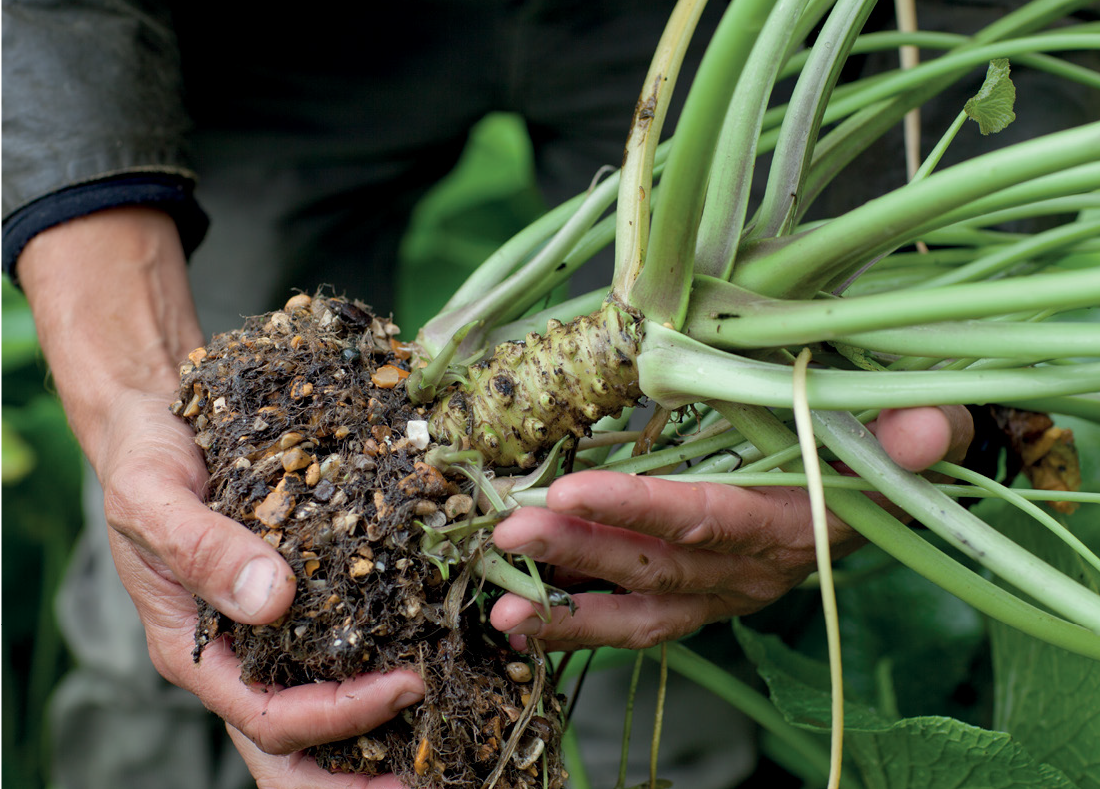
Traditionally grown in Japan and now the UK, this hardy plant is prized for its green rhizome that is grated to make the green paste served with sushi and sashimi.
Fresh Wasabi is made from grating the rhizome (swollen stem) of the wasabi plant. Imitation products found in packets and tubes, despite being labelled wasabi paste, will predominantly be made from horseradish, mustard, colourings, sweeteners and additives.
The ingredients in the wasabi rhizome that react with each other to produce the distinctive real wasabi flavour and pungency do not come into contact unless cell walls are broken down. The grating action on the right kind of wasabi grater will give you the necessary result and ensure you get the best of the real wasabi flavour. It may be tempting to try chopping or coarse grating the wasabi rhizome. Don’t. This does not break down the wasabi into a paste and so will not release the flavour or heat.
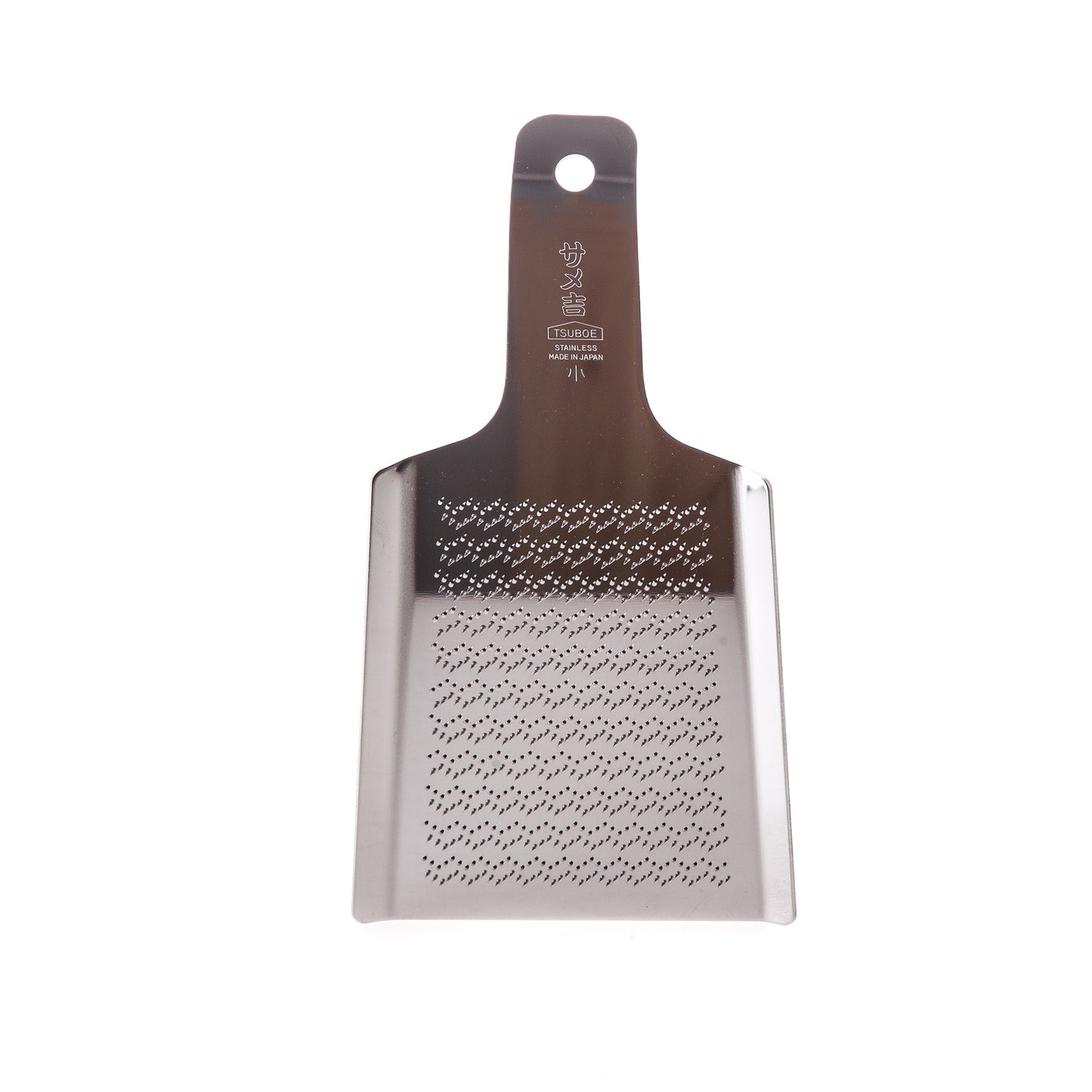
Use a wasabi grater to create the best quality fresh wasabi paste with a powerful taste, straight from the rhizome. It is especially made for the purpose of breaking down the cell walls of the rhizome in order combine the two elements that give fresh wasabi its pungency, flavour and heat.
Traditionally shark skin graters are used in Japan. Imitation shark skin graters along with ceramic and aluminium graters are available HERE
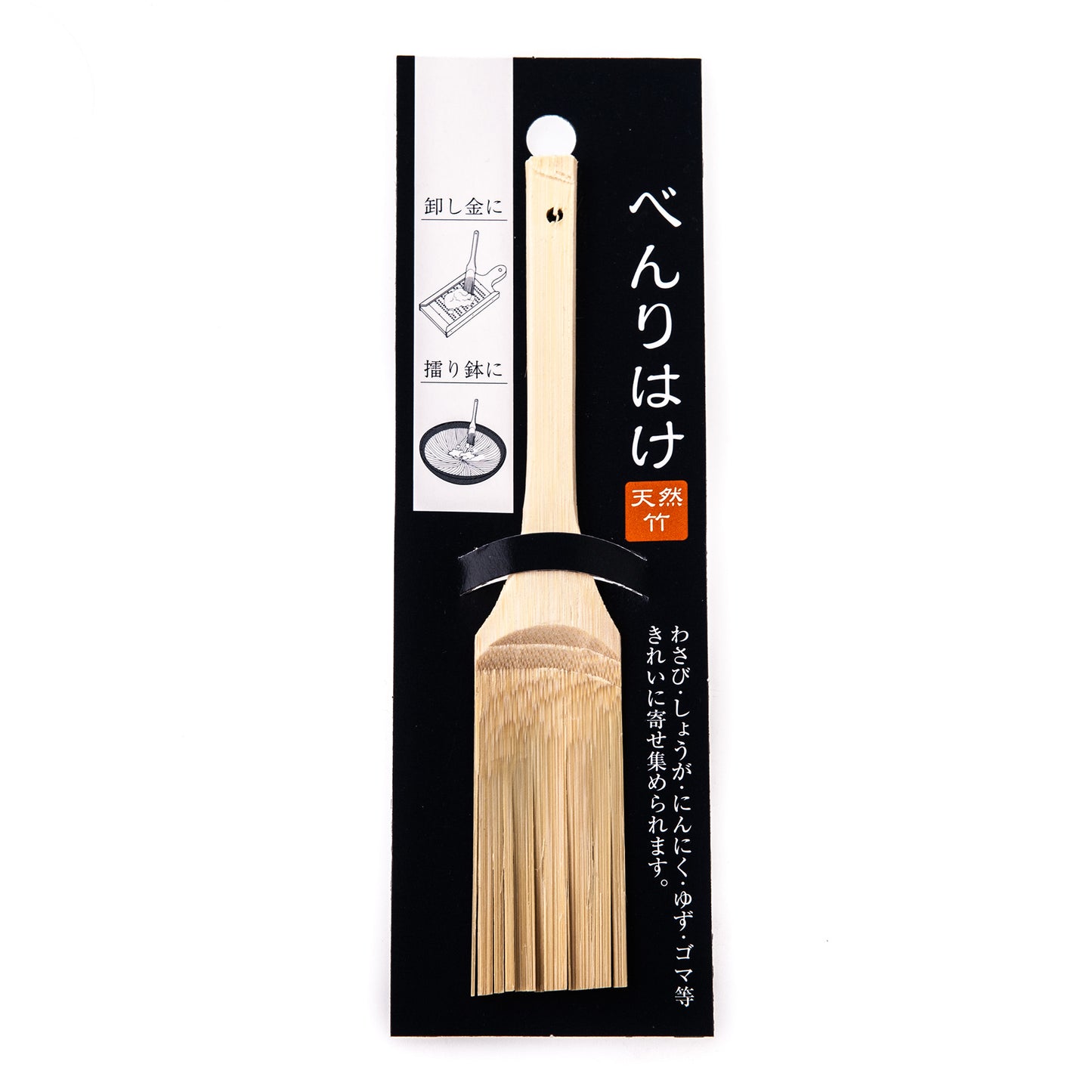
Traditionally made from bamboo, the wasabi brush is used to brush your fresh wasabi off the grater into a round ball to preserve the taste. Whilst you can scrape it off with something else, the fine but firm bamboo is best to get the maximum amount of wasabi off of the grater without damaging it. These are available to purchase HERE.
Fresh wasabi is best stored in a glass of water in the fridge. Keep the stems at the top and out of the water and change the water every day. It can also be stored in the fridge wrapped in as piece of muslin cloth as it was when you received your wasabi. If these procedures are followed rhizomes will store for 2 weeks.
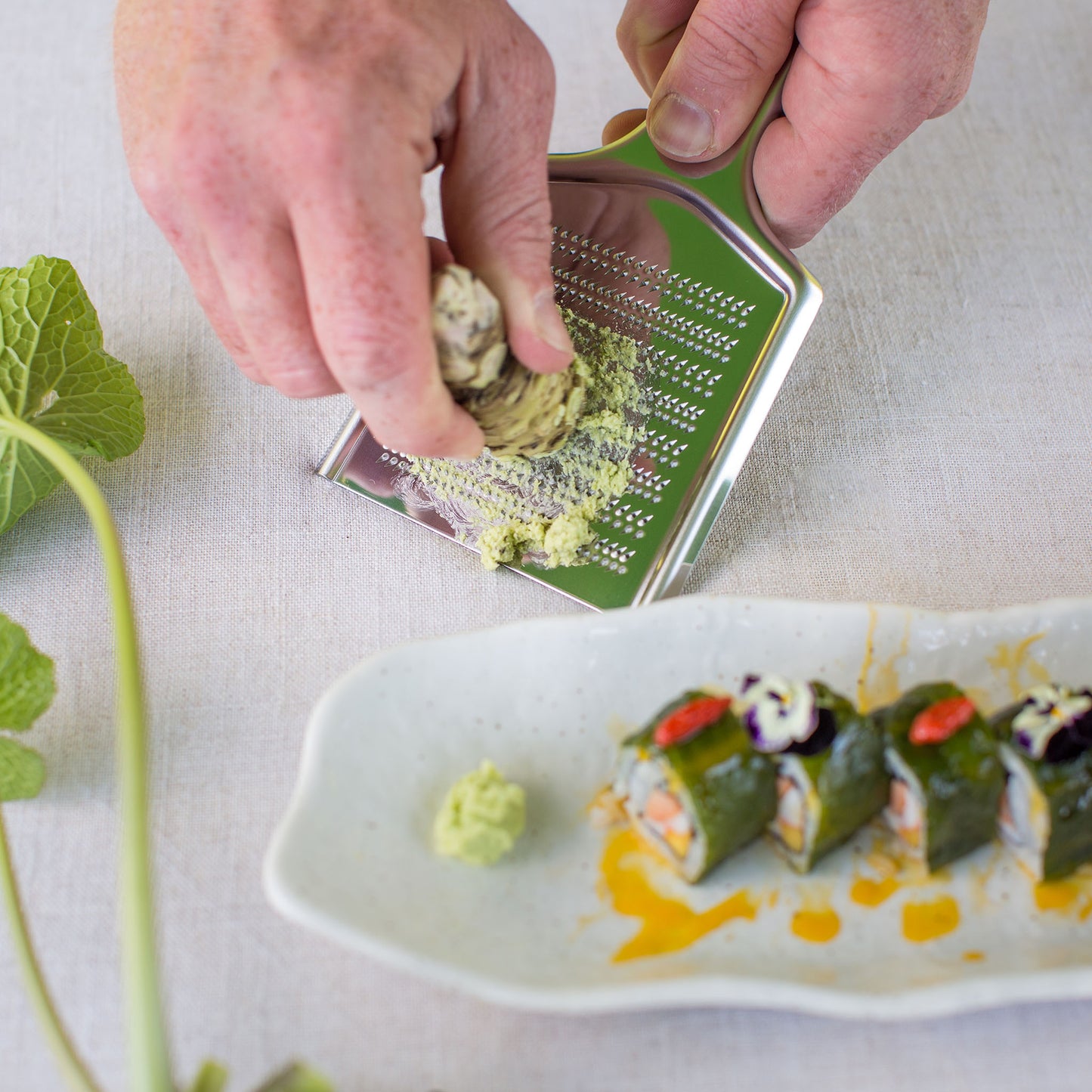
Fresh wasabi is 100% wasabi. Due to the expertise needed to grow the plant, associated costs and relative scarcity, wasabi pastes and powders are mostly made up of horseradish, mustard powders, colourings and flavourings. Check the ingredients and you will see wasabi makes up a very small percentage and often this comes from other parts of the plant such as the leaves and stems. Some products called wasabi contain no actual wasabi.
Some varieties of fresh wasabi are greener than others. No fresh wasabi is as green as the wasabi pastes and powders that you buy in the shops or see in restaurants. This is because these wasabi pastes and powders are not made from wasabi but contain other ingredients like horseradish and mustard and rely on colouring agents to provide the colour.
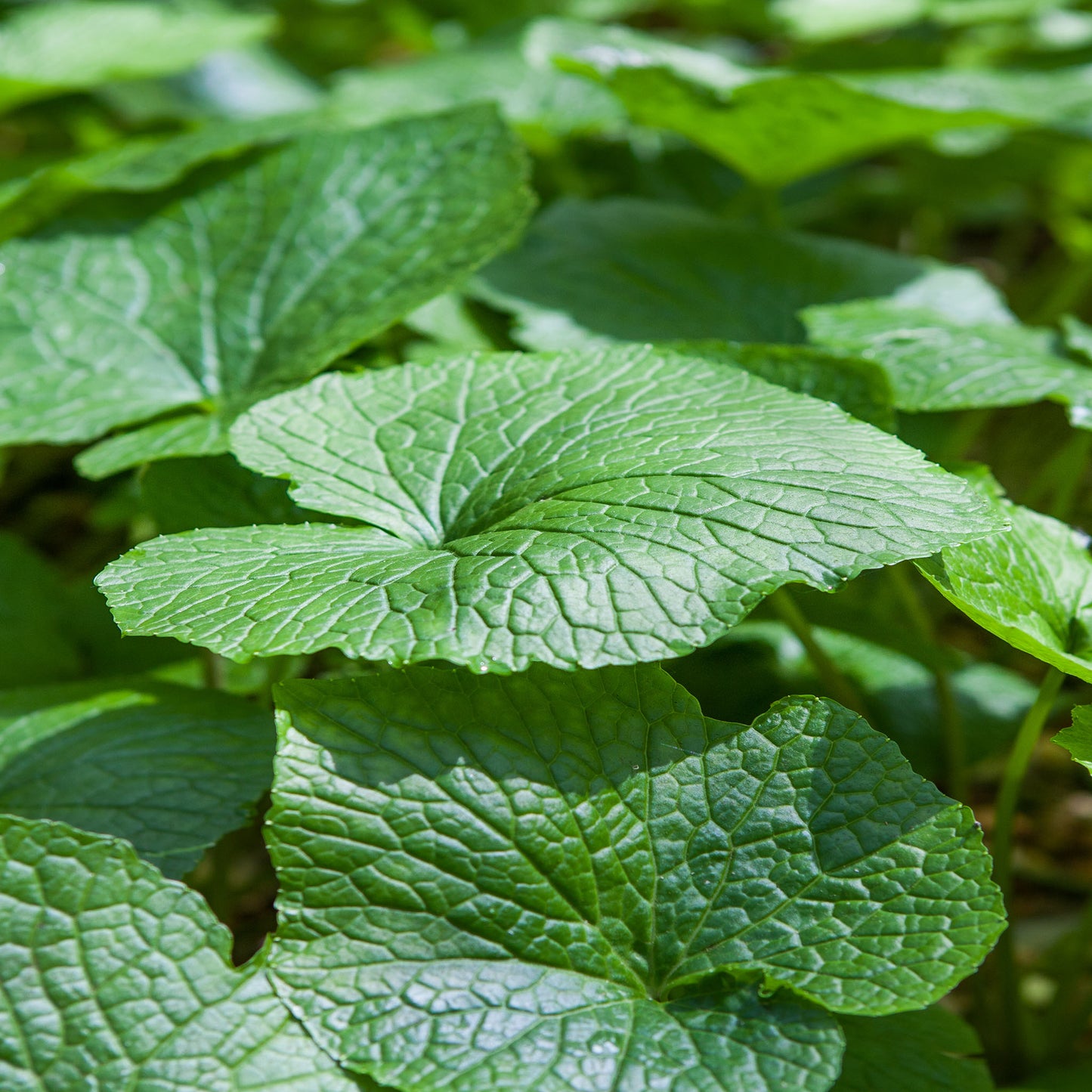
The wasabi plant is a tough plant to grow. We have built a special growing facility committed to wasabi production for the 18 to 24 months it takes to grow a single crop to maturity. Growing fresh wasabi also takes a lot of care and support to protect it from the weather and all the other challenges that sensitive crops face. Because we use no insecticides, herbicides or fungicides we have to put a lot of time into doing this. Due to the difficulty in successfully growing the plants, the fresh wasabi from The Wasabi Company is the only fresh wasabi commercially available that is grown in Europe. The end result speaks for itself. Great tasting fresh wasabi offers a genuinely unique experience and real value for money.
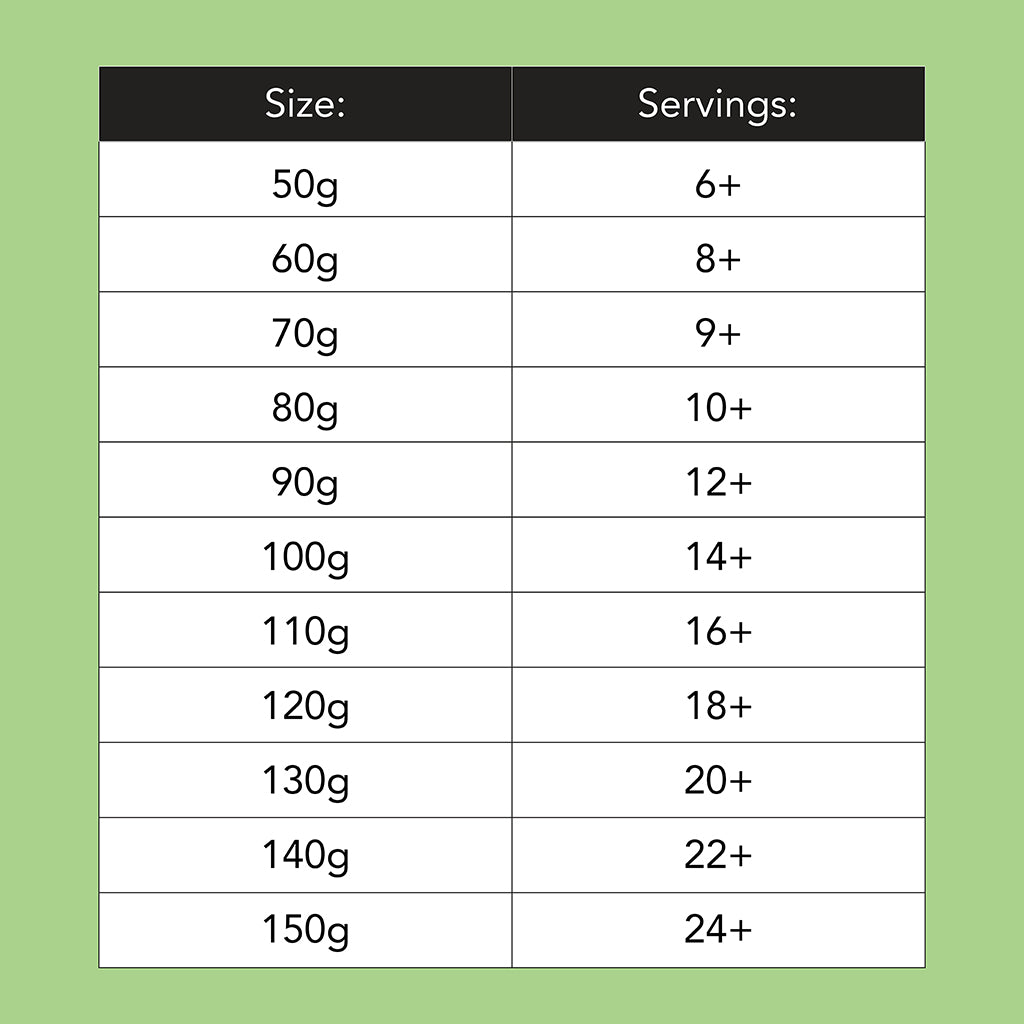
Obviously, this depends on just how much you love wasabi and what you will be using it for. For the purposes of this guide we have listed the number of servings we tend to achieve from the various sized rhizomes when combining with sushi. Follow these and you should have plenty of wasabi.
No, you can buy as little, or as much fresh wasabi as you like dependent on stock levels! The smallest size we sell is usually 50g, however between harvests we can offer smaller pieces of between 20-50g to order in multiples of 100g or 200g.
Fresh wasabi is a very healthy vegetable. Due to its natural effects stimulating the liver and gallbladder care should be taken if you suffer from a predisposition to gastrointestinal conditions.
We do not recommend freezing whole rhizomes. However, grated wasabi can be frozen if it is done immediately after grating. Grate the wasabi and wrap with cling film. Make sure the wasabi is protected from the air by wrapping it up tightly and freezing immediately.
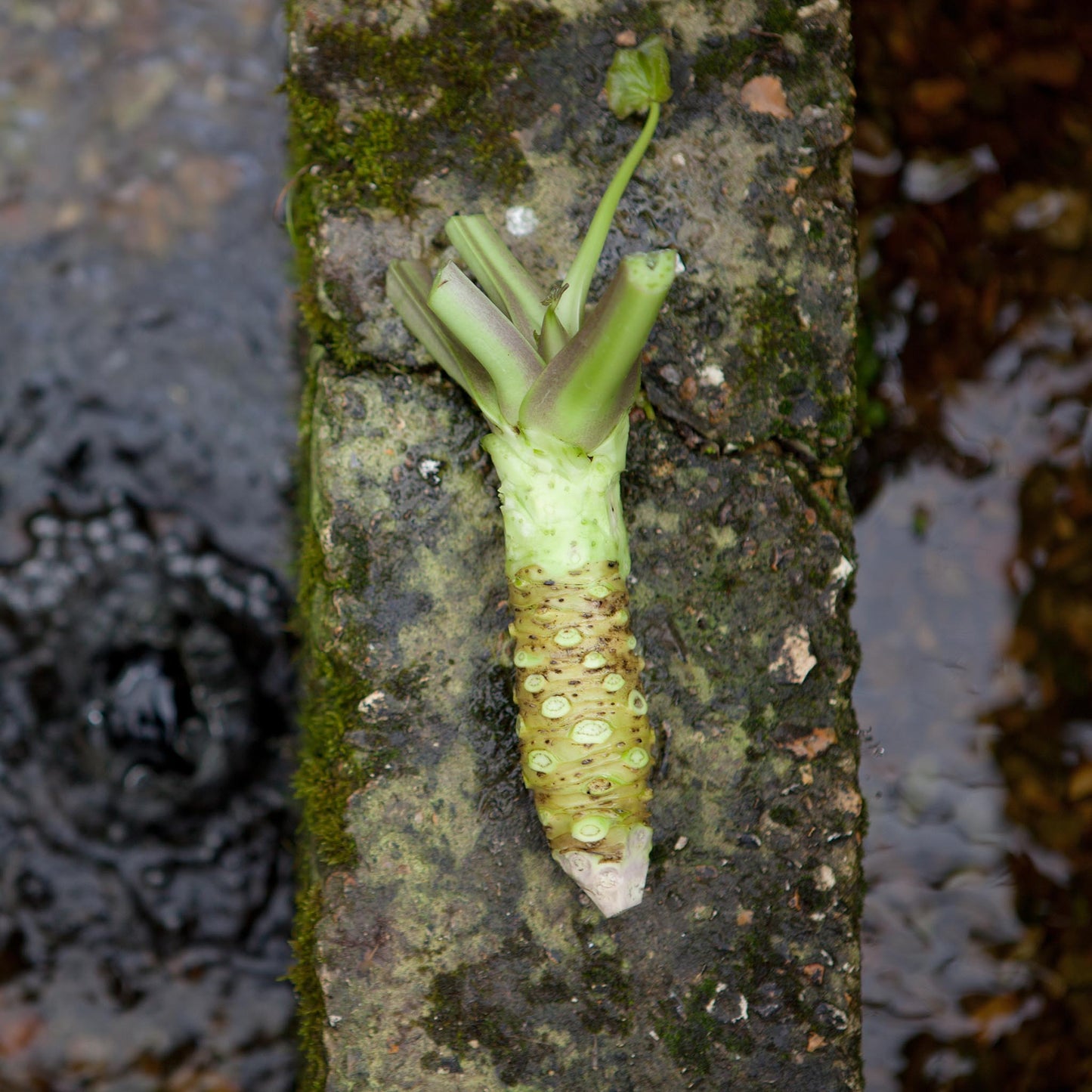
Our wasabi is not certified organic as it is grown on a non-organic site. However, no insecticides, herbicides or fungicides are used in the wasabi beds.
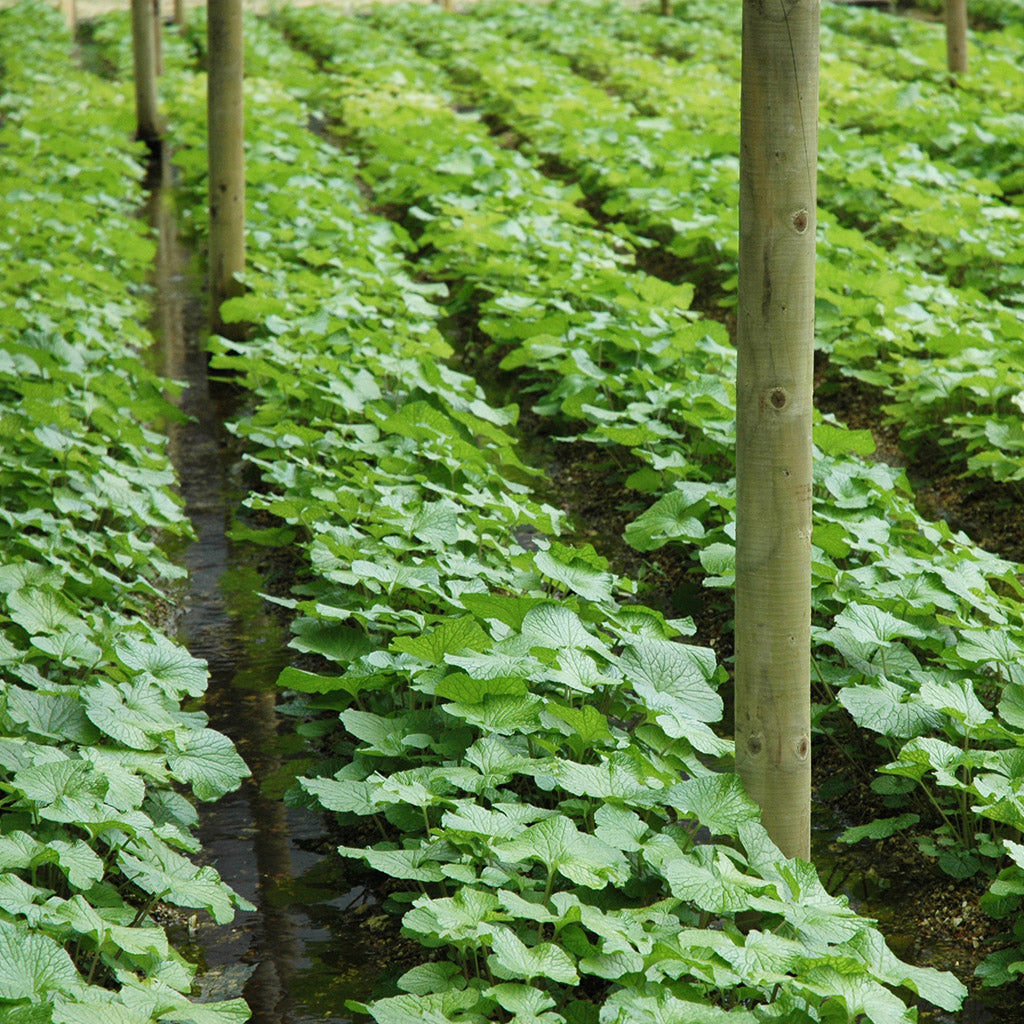
All Fresh Wasabi grown by The Wasabi Company is from Dorset and Hampshire in the south of England. The plants are in gravel beds, constantly supplied by fresh, naturally mineral rich water. We do not disclose the exact location of the farms to protect our intellectual property regarding the growing method. At times we also offer Japanese Wasabi for sale as despite our best efforts we cannot grow enough to keep all our customers supplied all year round. We source this from a selected supplier who we have visited in Japan and has access to excellent produce. UK and Japanese grown wasabi are listed as separate products, clearly identified on the website.
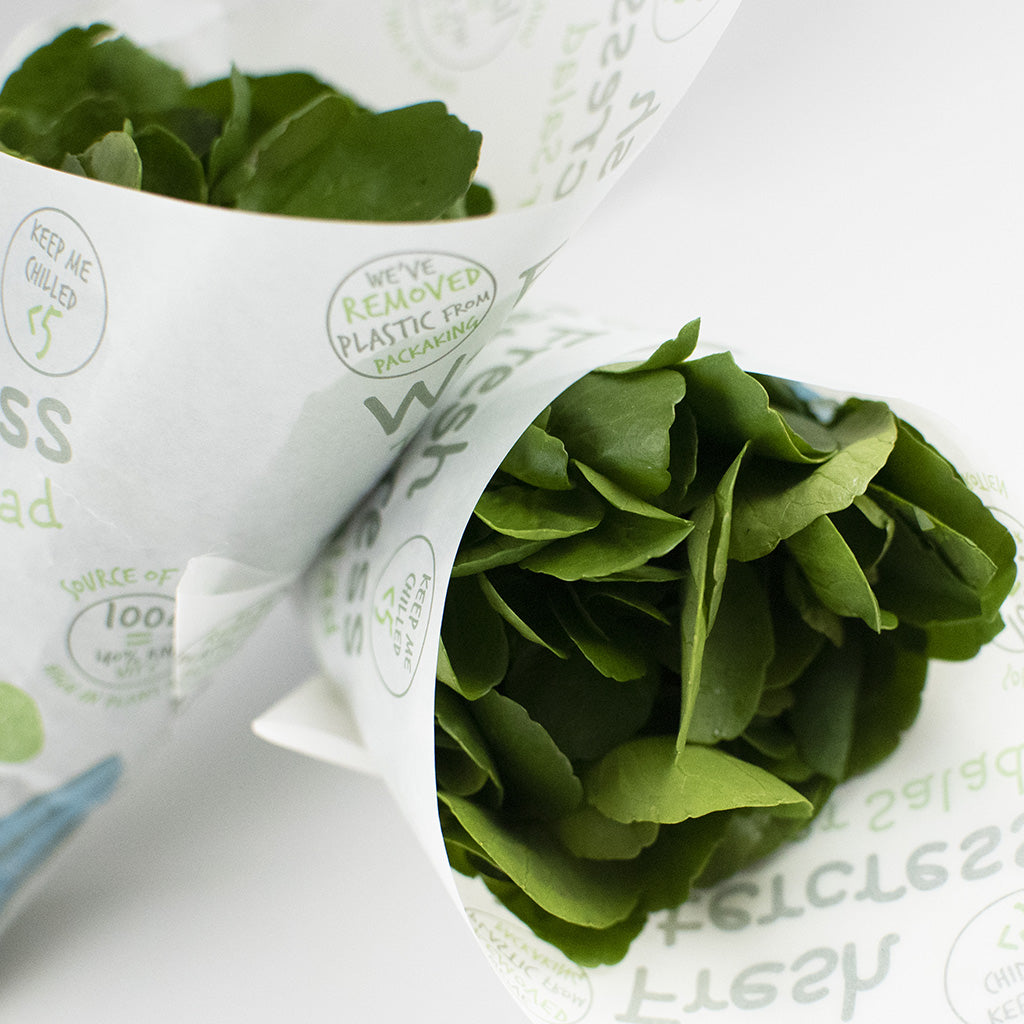
The Wasabi Company is a sister company to The Watercress Company which grows watercress and baby leaf salad. Wasabi is a product that the company came across when looking for a new challenge that suited their existing farming conditions and area of expertise. Their watercress is available to buy online HERE.
At this stage, we are not opening our farms to visitors. However, it's possible that in the future we may organise farm visits. If you would be interested in seeing for yourself how we grow fresh wasabi and sample it on farm, then please let us know by sending us an email and we will be in touch.
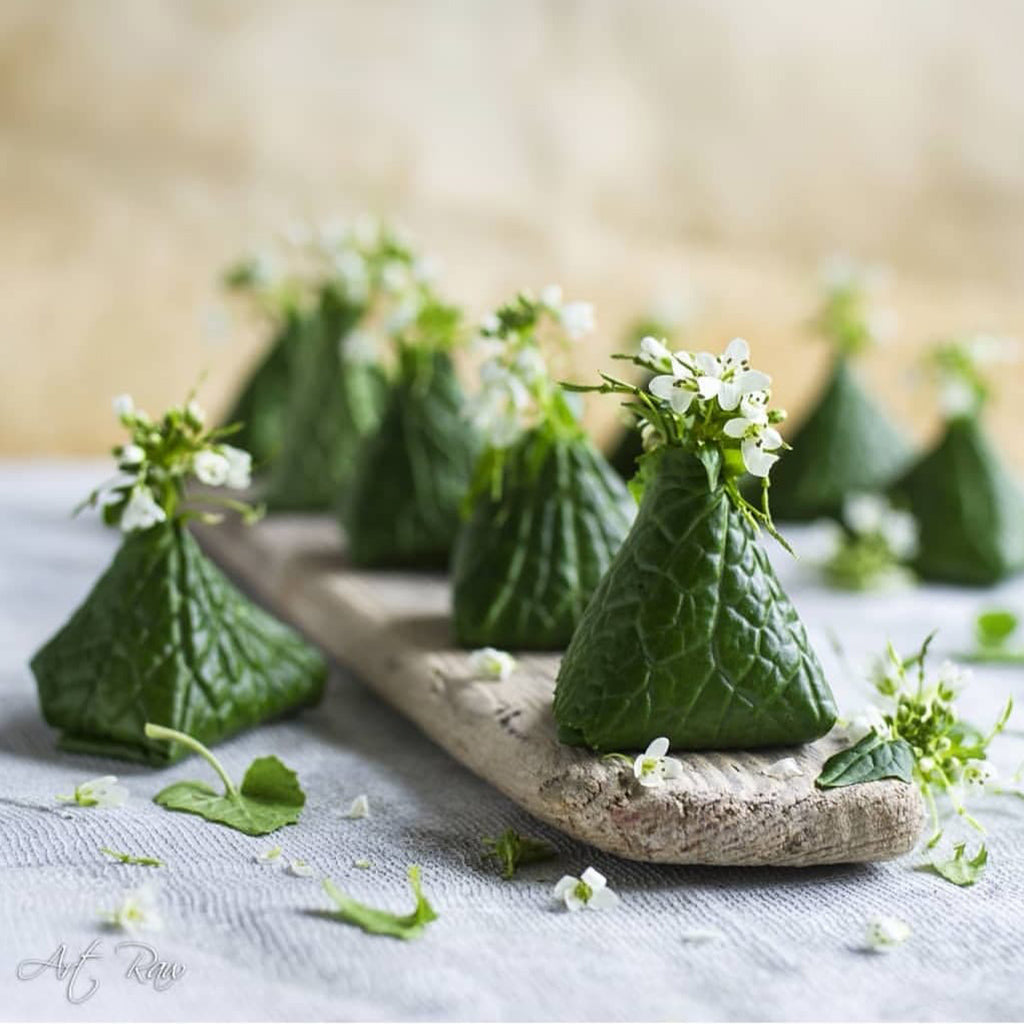
Yes! There are so many delicious dishes you can prepare for yourself at home using fresh wasabi, as well as trying it with more than just sushi! Serving suggestions and some delicious recipes are available on our website.
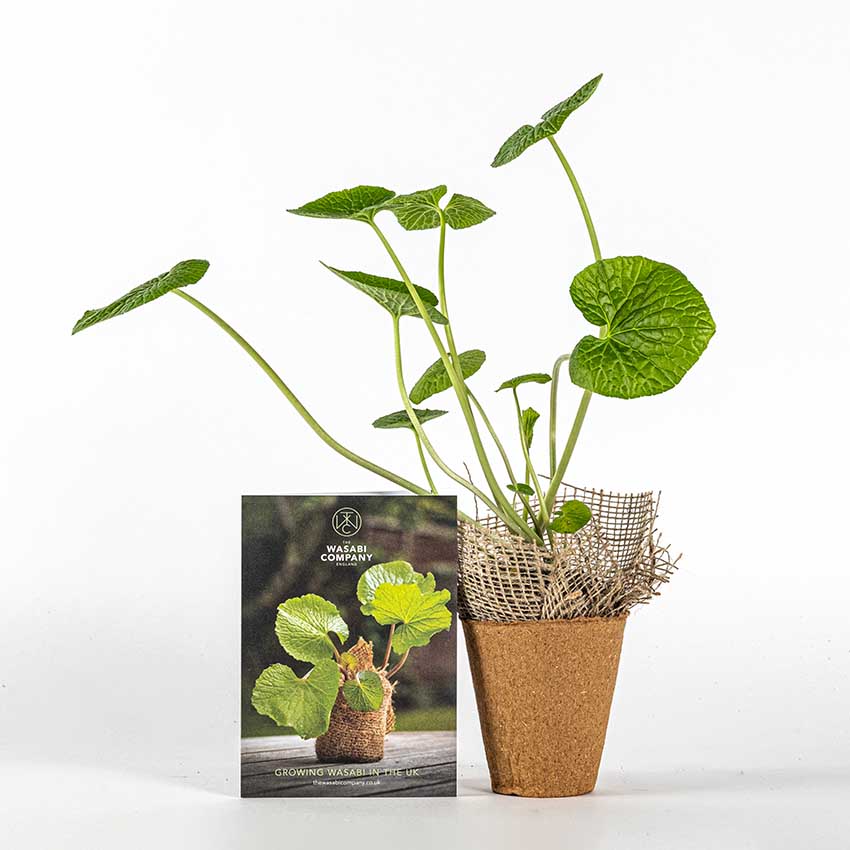
Wasabia japonica is a perennial brassica, native to the Japanese mountains. Semi-aquatic, wasabi grows in the wild alongside streams with large trees overhead that provide a canopy of shade. Wasabi will also grow very well in soil in the garden in a damp shady spot. Wasabi will also grow into a large houseplant in a pot and is a stunning plant that can be enjoyed in full - flowers, leaves, steams and, once mature, the prized rhizome.
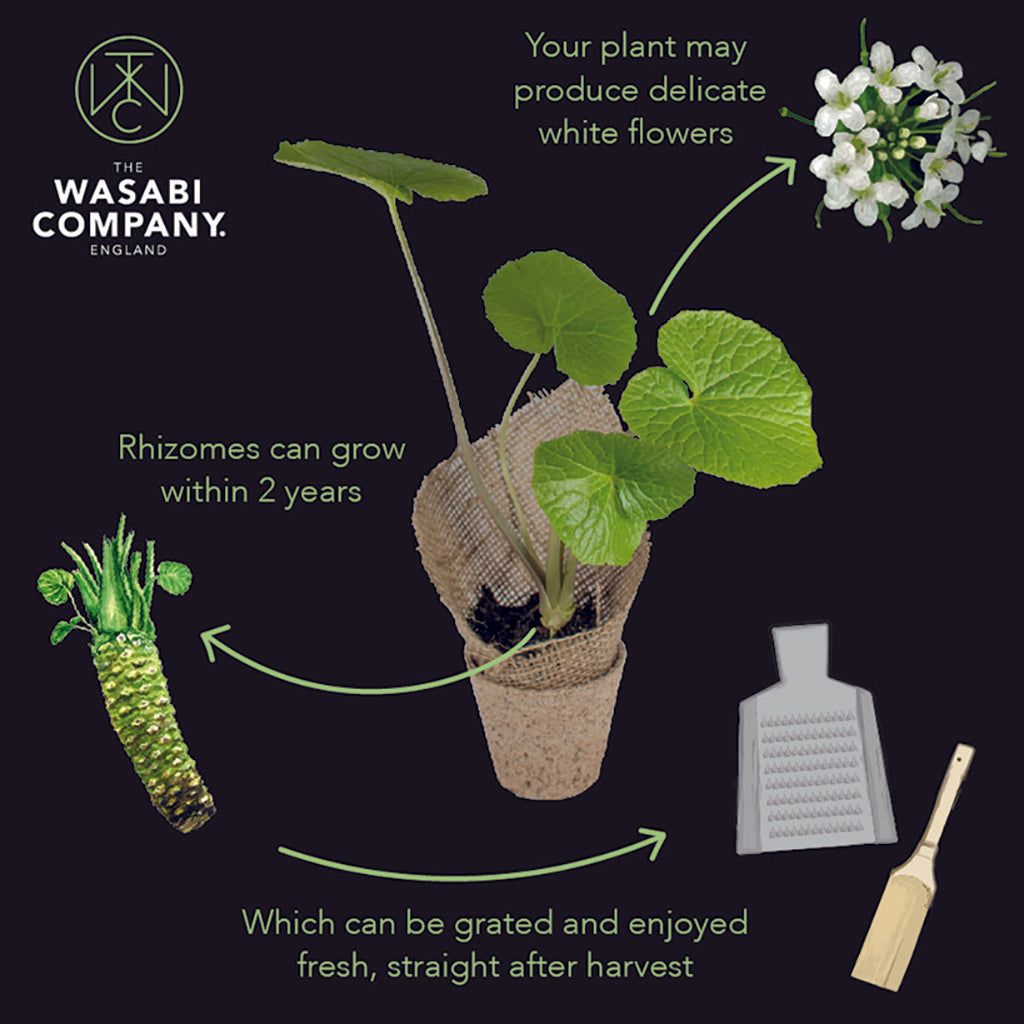
Wasabi plants are available from our site at most times of year and further information is available HERE. They are beautiful looking and great for the garden as will be happiest in a shady corner of your garden where other plants wouldn't like it so much. Wasabi will grow in soil or a pot and the soil should be kept moist, for more information on care at home please see our WASABI GROWING GUIDE.
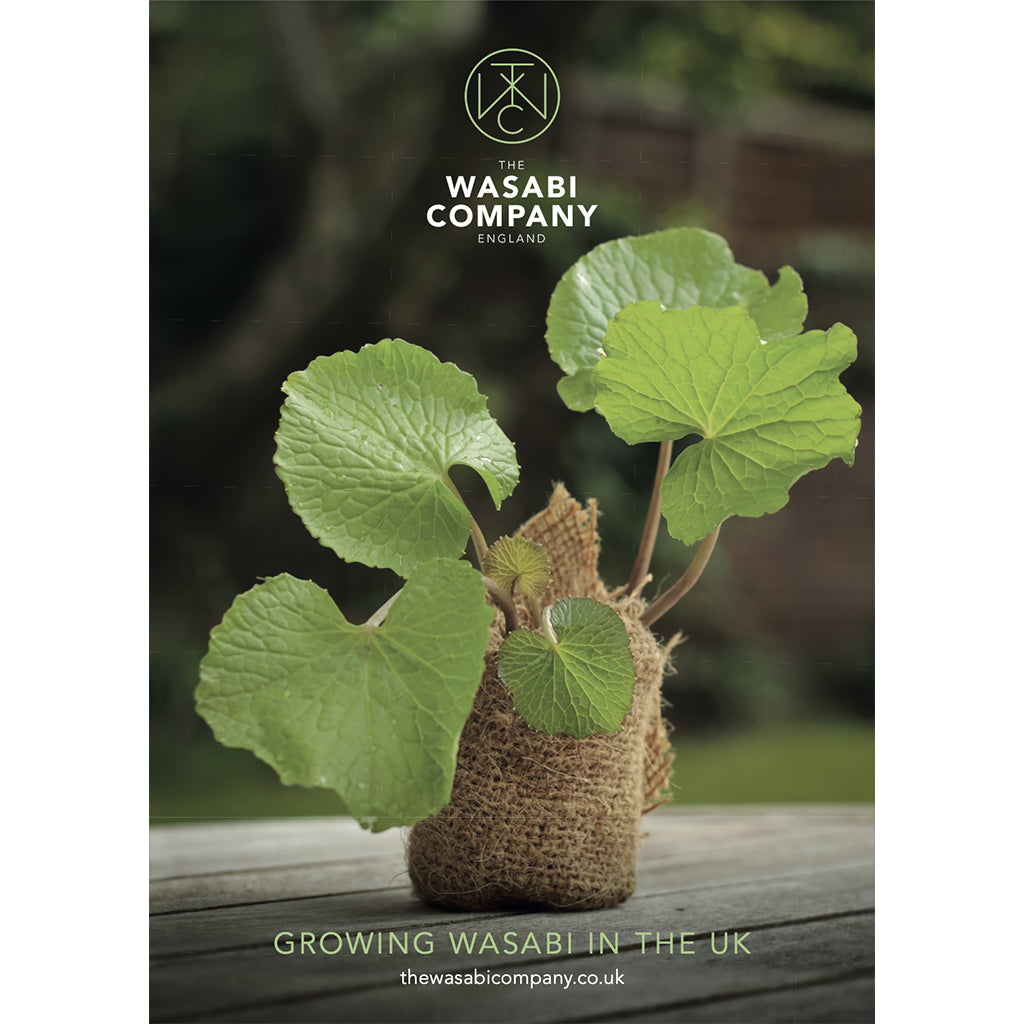
Wasabi should be planted in free-draining, fertile soil. In a pot use standard compost with added perlite or bark and gravel in the base of the pot. Guard from snails and slugs and provide shade over the summer. For more information on how to care for your wasabi plant, please see our WASABI GROWING GUIDE
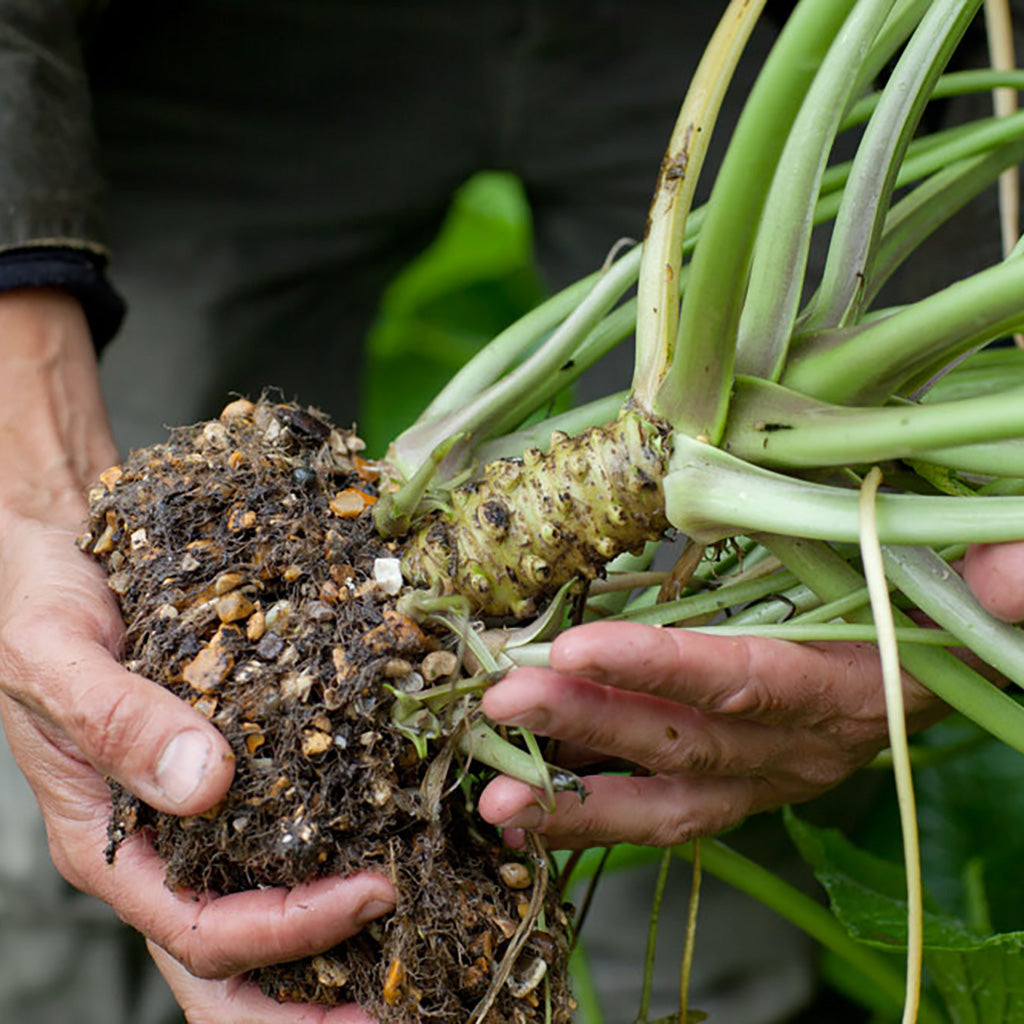
Wasabi is 100% edible, so the leaves, leaf stems and flowers can all be enjoyed while you wait 18 months for the rhizome to develop at the base of the plant. Once rhizomes are present you can choose to pull the whole plant and grate your own fresh wasabi. There will be several small offshoots / plant-lets at the base of the harvested plant, these can be separated and re-planted to continue your fresh wasabi growing.

Wasabi plants are available online from The Wasabi Company website most of the year and make a great addition to your garden, house or a beautiful gift. You can find them here on our website. If they are not in season, then simply click Notify Me and fill in your email address: we will let you know as soon as they are available again.
Plants can die for various reasons, such as overwatering, underwatering, poor soil conditions, inadequate light, pests, diseases, or sudden temperature changes.
Improper watering is a common cause of plant death. Overwatering can lead to root rot, while underwatering can cause dehydration and stress. Wasabi plants need consistently moist soil. Make sure the plant is not sitting in waterlogged soil or allowed to dry out completely. Water regularly to contain a consistently moist environment. They prefer cool and humid conditions.
Here you can place an explanation or answer to the question.
If your plant is beyond salvation, it's best to remove it from its pot, examine the roots, and assess the overall condition. Dispose of the plant and consider repotting or replacing it.
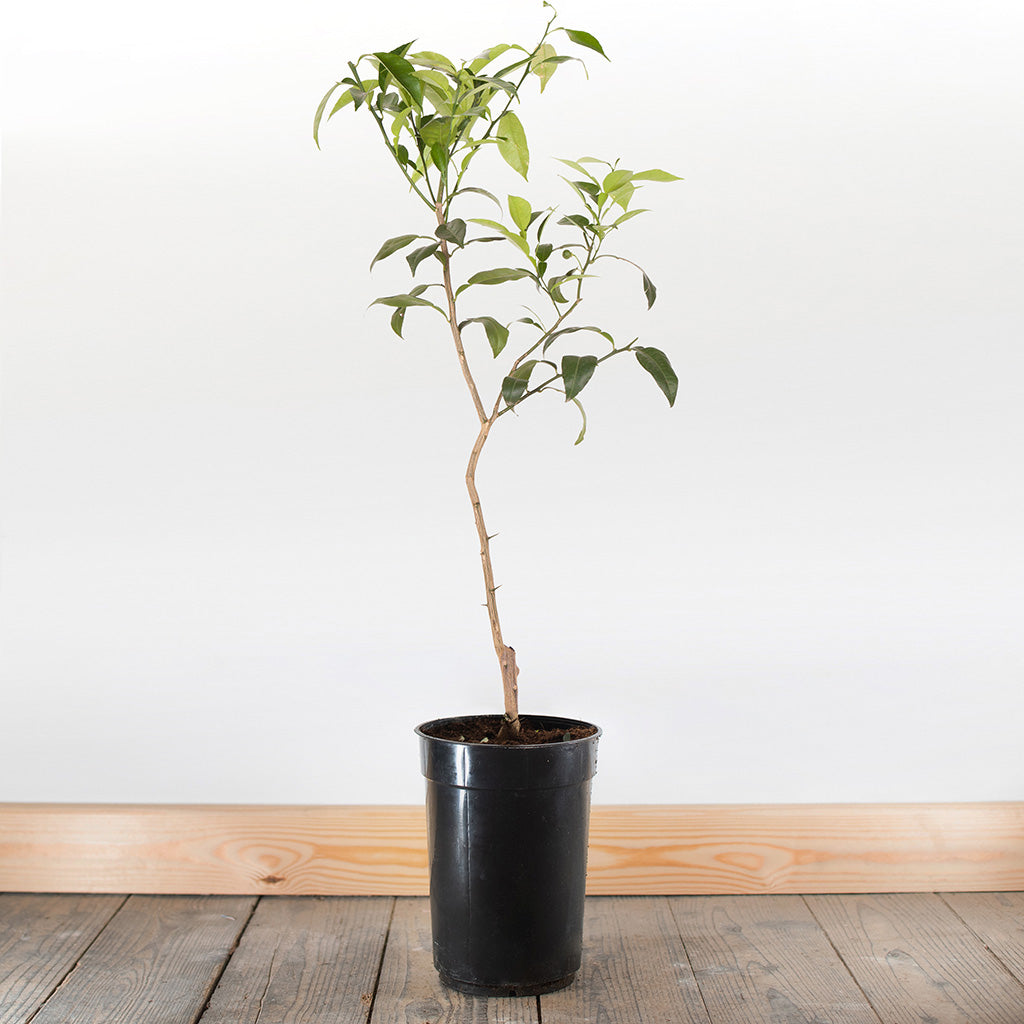
Yuzu is a Japanese citrus tree (Citrus junos). The yuzu tree is a hybridisation of a sour mandarin and the lemon-like Ichang papaeda. An essential element of Japanese cuisine, yuzu is used to flavour ponzus, soy sauces, miso, honey and chilli paste. European chefs have embraced its famously tart juice in dishes as wide ranging as fish and white meat to sorbets, ice creams and cheesecakes. Yuzu juice and zest are also big hits with the cocktail crowd and a yuzu gin & tonic tastes like discovering the drink all over again for the first time.Yuzu trees are available as non-grafted and grafted on to a root stock and grow well in European climates and make for an attractive tree which is recognisably citrus.
Genuine, un-grafted yuzu trees are hardy down to -10ºC but take over 10 years to yield fruit. Yuzu trees are often grafted onto faster growing root stock so this will dictate it's hardiness, The Wasabi Company sells fruiting yuzu trees that are hardy down the -5ºC. See our Hardy Yuzu Tree Growing Guide and Non-Hardy Yuzu Tree Growing Guide
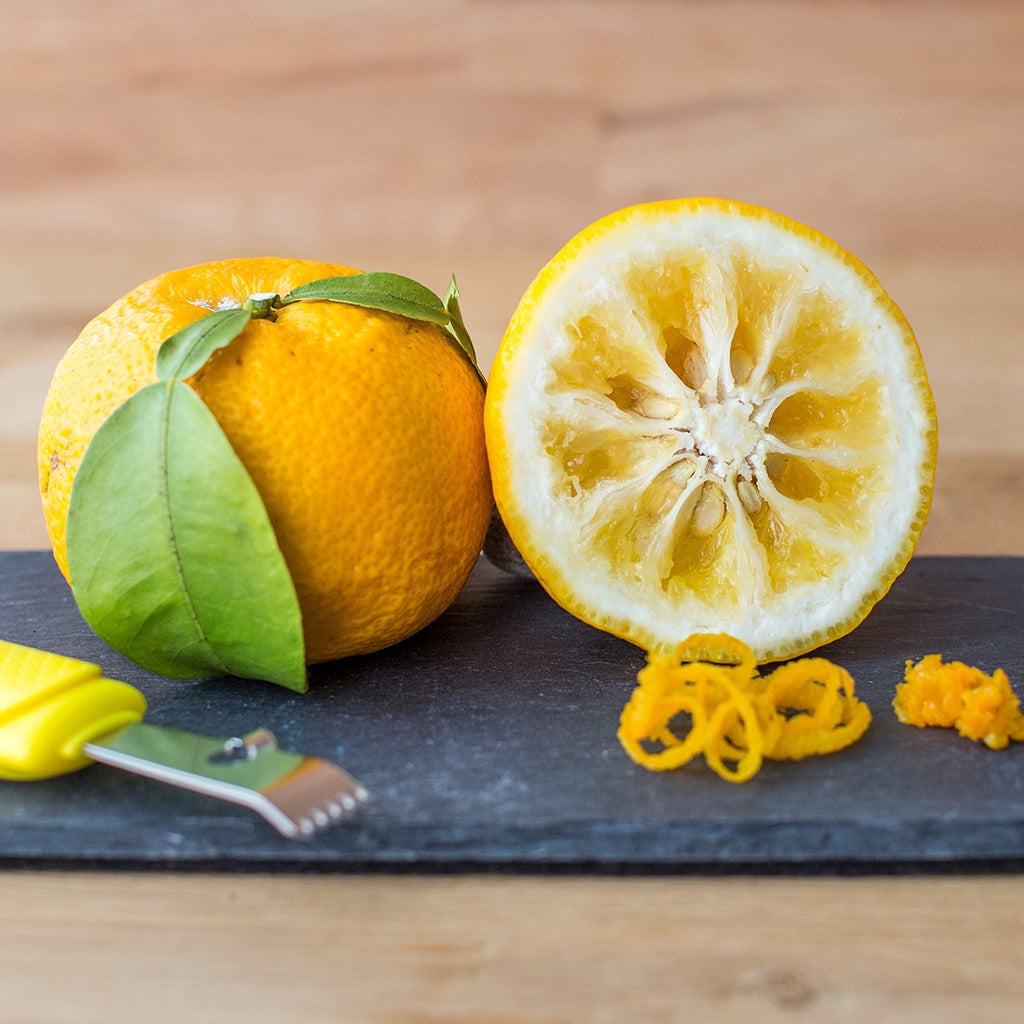
Genuine yuzu trees take 10 years to yield fruit, grafted trees from The Wasabi Company are sold at 2-3 years old and will yield fruit in year four or five.
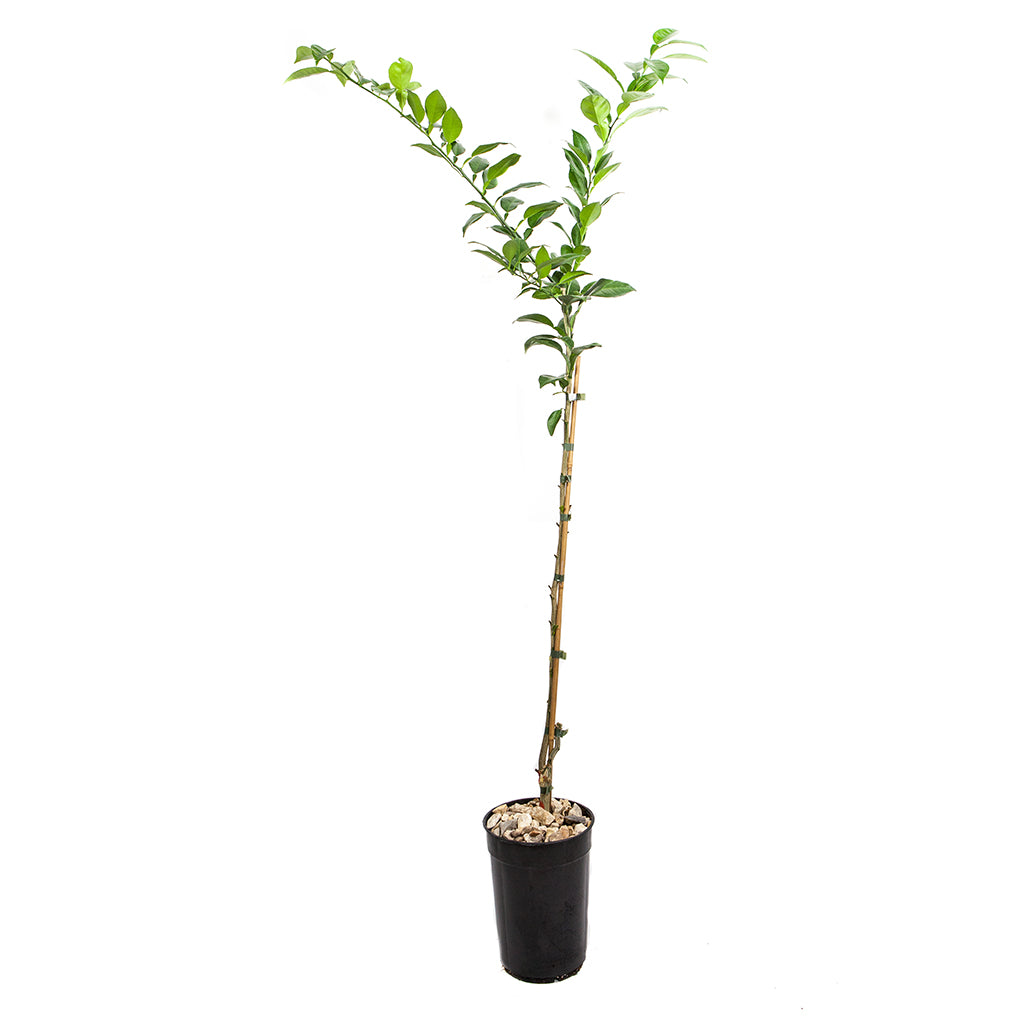
Yuzu trees, grafted and ready to fruit are sold online by The Wasabi Company. Genuine yuzu trees, that are hardy down to -10ºC are available from The Wasabi Company HERE. We have varied availability of trees throughout the year and if the one you are looking for is not currently available please notify us and we will let you know as soon as it is back in stock.
The yellowing and curling leaves might suggest over watering. Ensure care is taken not to over water in winter
Do not pot a citrus tree into a container much larger than the root ball.
Here you can place an explanation or answer to the question.
Feed with a proprietary citrus fertiliser during winter and change to a balanced feed from mid-summer

Yuzu fruit, also known in Japan as "the queen of citrus" is a citrus fruit widely used in Asian cuisine. It originated and grows wild in central China and Tibet. It was introduced to Japan and Korea during the Tang Dynasty.Yuzu delivers the famously aromatic and complex blend of citrus with notes of mandarin, grapefruit and lemon. The most popular Japanese citrus is used to flavour ponzu and soy sauce the wonderfully tart yuzu zest and juice are also used in small amounts in dressings, soups and marinades with all types of fish. Yuzu also combines spectacularly well with creme based desserts and sorbet, makes wonderful jam, candied or chocolate peel and adds a fantastic burst of powerful citrus to cocktails and sparkling water.
There are many ingredients and products that benefit from yuzu's supreme citrus flavour and we've compiled a whole range of them for you to browse through - check out our Yuzu Range
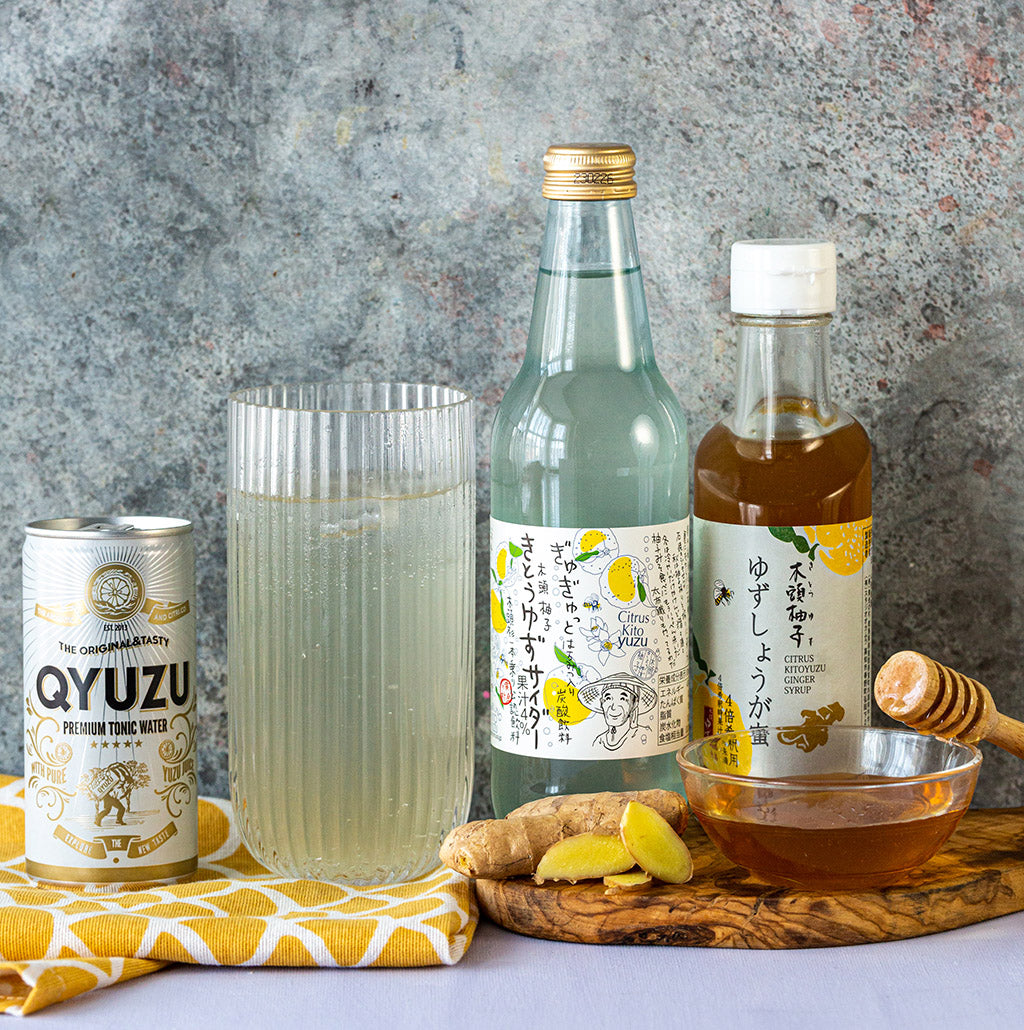
The yuzu's flavour is tart, closely resembling that of the grapefruit, with overtones of mandarin orange. It is rarely eaten as a fruit, in Japanese cuisine its aromatic zest is used to garnish dishes and its juice is commonly used as a seasoning. The juice is also great in drinks (think fizzy water with a cube of ice or gin & tonic on a summer's day!) or to liven up a sauce or marinade.
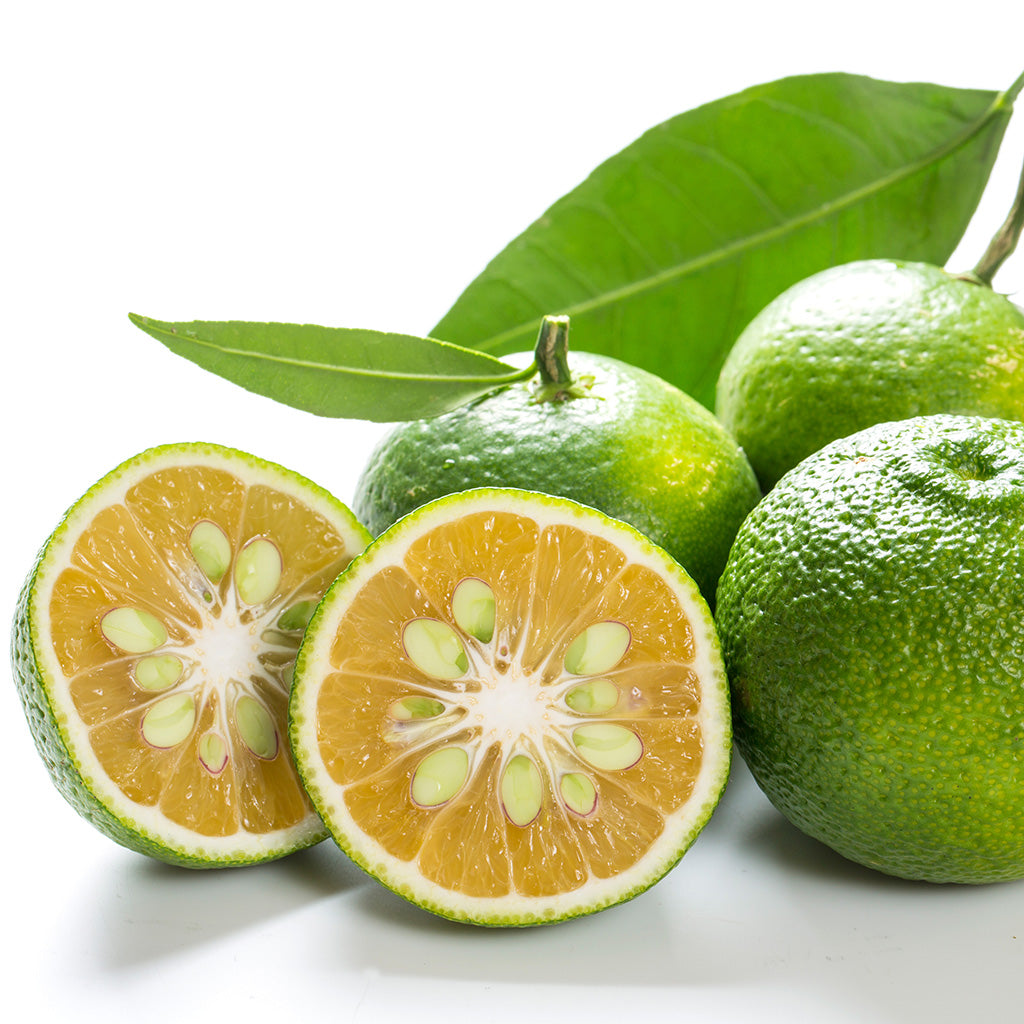
Sudachi is a Japanese citrus fruit, the majority of which is cultivated in the Tokushima prefecture. The squeezed juice is often used as an alternative to vinegar. Sudachi are very small fruit that grow in clusters on branches and have a lime flavour with peppery, herbal undertones.
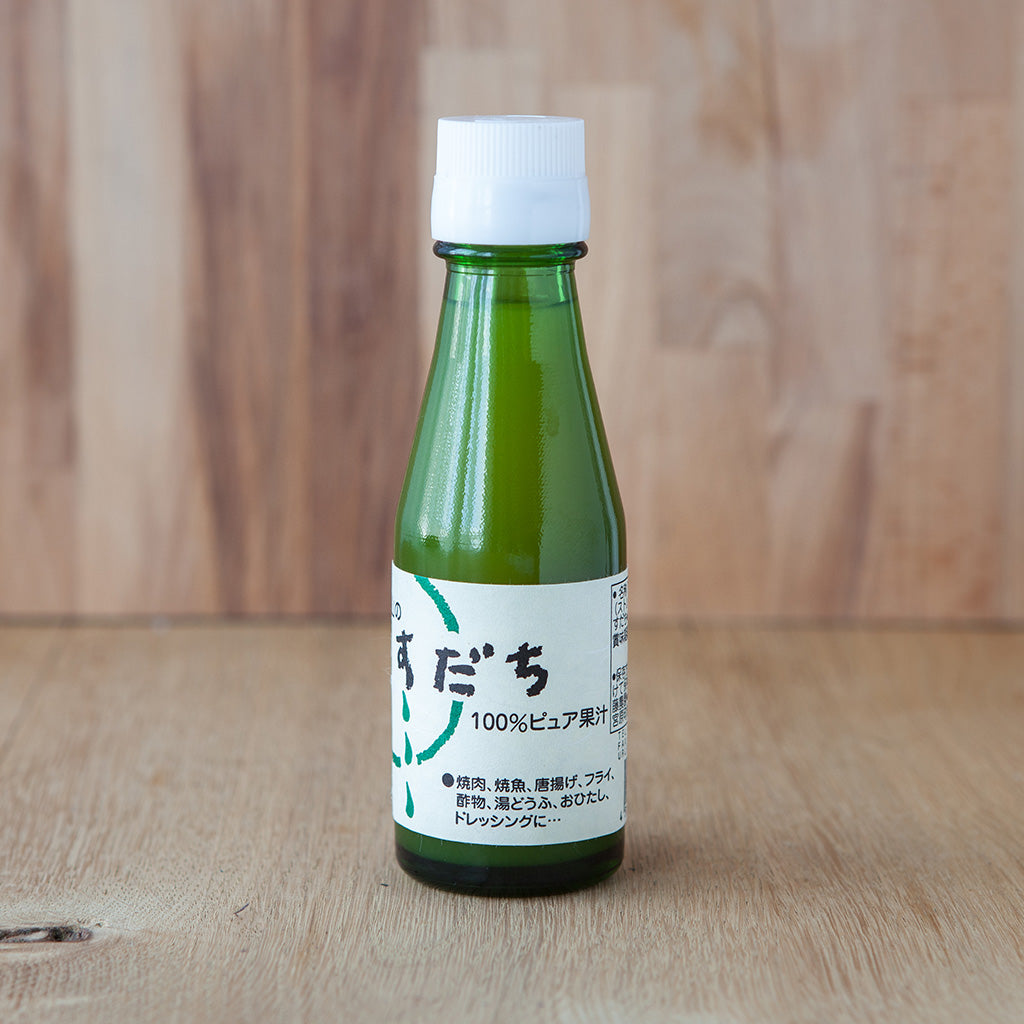
Sudachi juice is sour citrus, not eaten as fruit, but used as food flavouring. The flavour is comparable to that of a sweet lemon or lime.
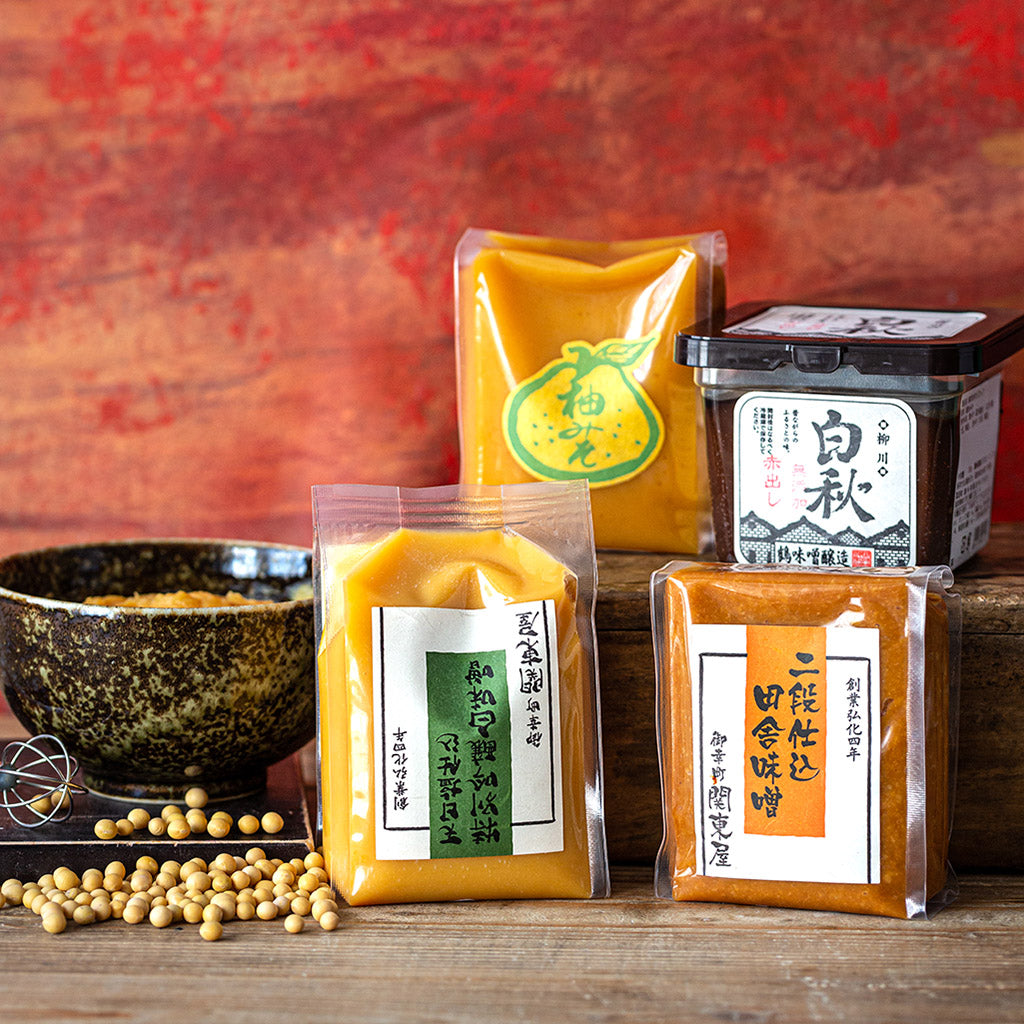
Miso is produced by fermenting soybeans with salt and koji and is a traditional Japanese seasoning. Rice, barley, or other ingredients are added to influence the flavouring. The result is a thick paste used for sauces and spreads, pickling vegetables or meats, and mixing with dashi soup stock to serve as miso soup.
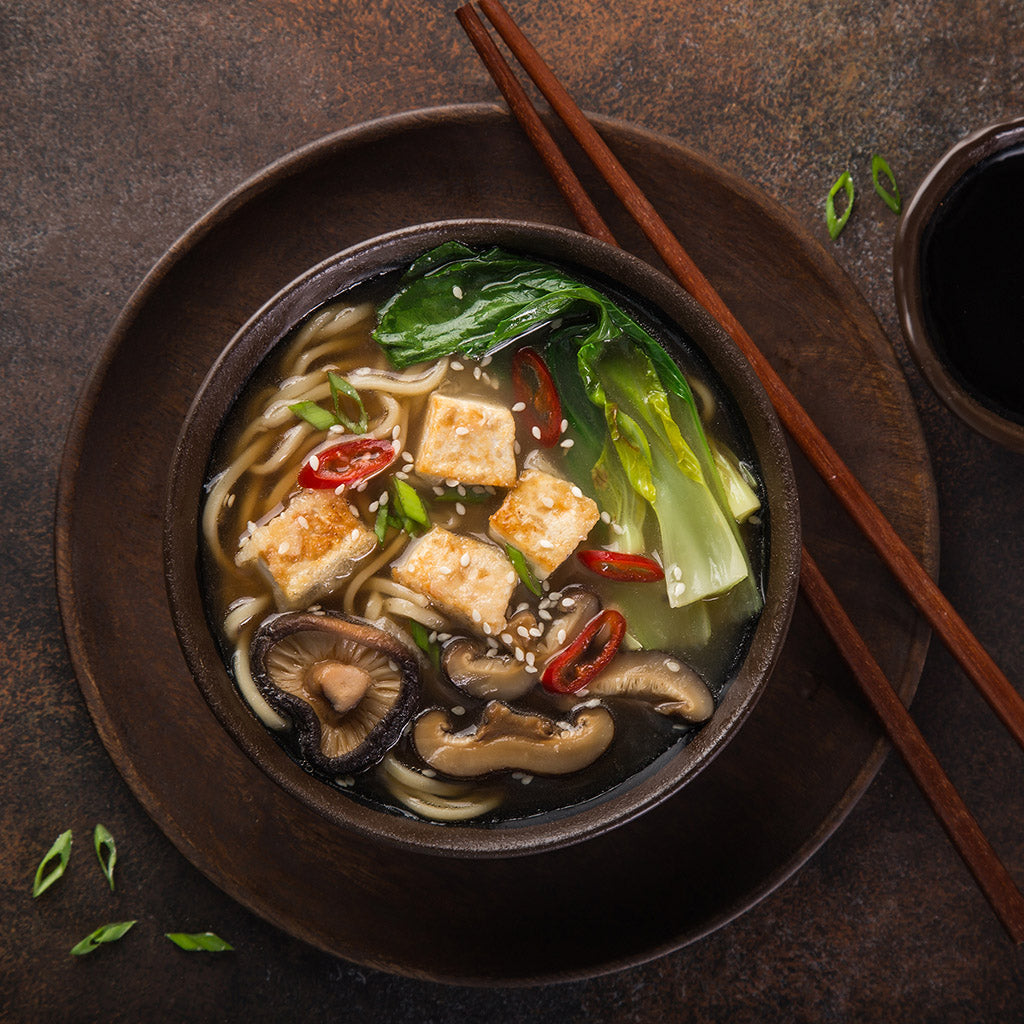
Miso soup is very easy to make, nutritious and delicious! There are a number of miso recipes available in the RECIPES section of our website. And we have put together a simple step-by-step guide of How to Make Miso Soup
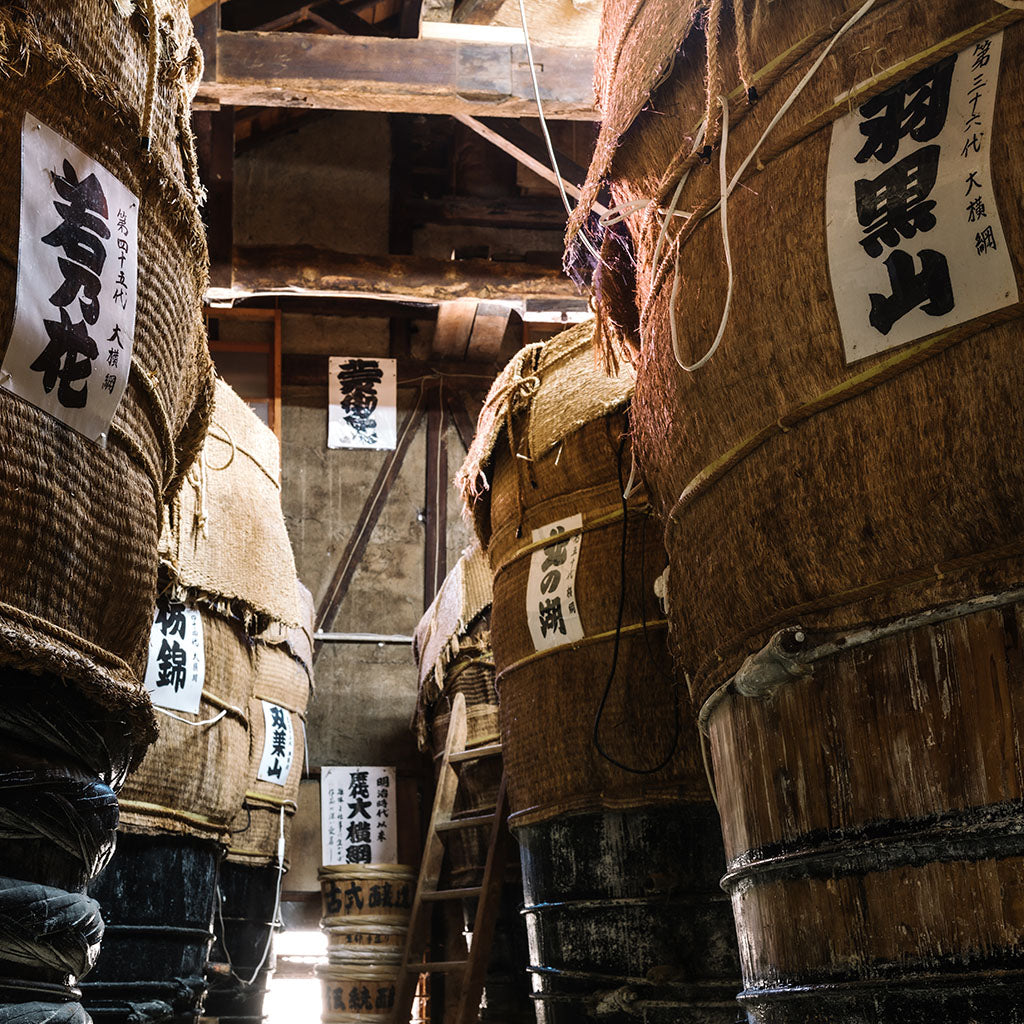
A family business now run by the fourth generation, Marusho's vinegar brewery is located in the same building where they began in 1879. Fermented and aged for 90 to 500 days in Japanese cedar wood casks (each one named after championship winning sumo wrestlers!) the vinegars are made with rice grown on the family estate, water from the Kumano mountains and only the highest quality natural ingredients.
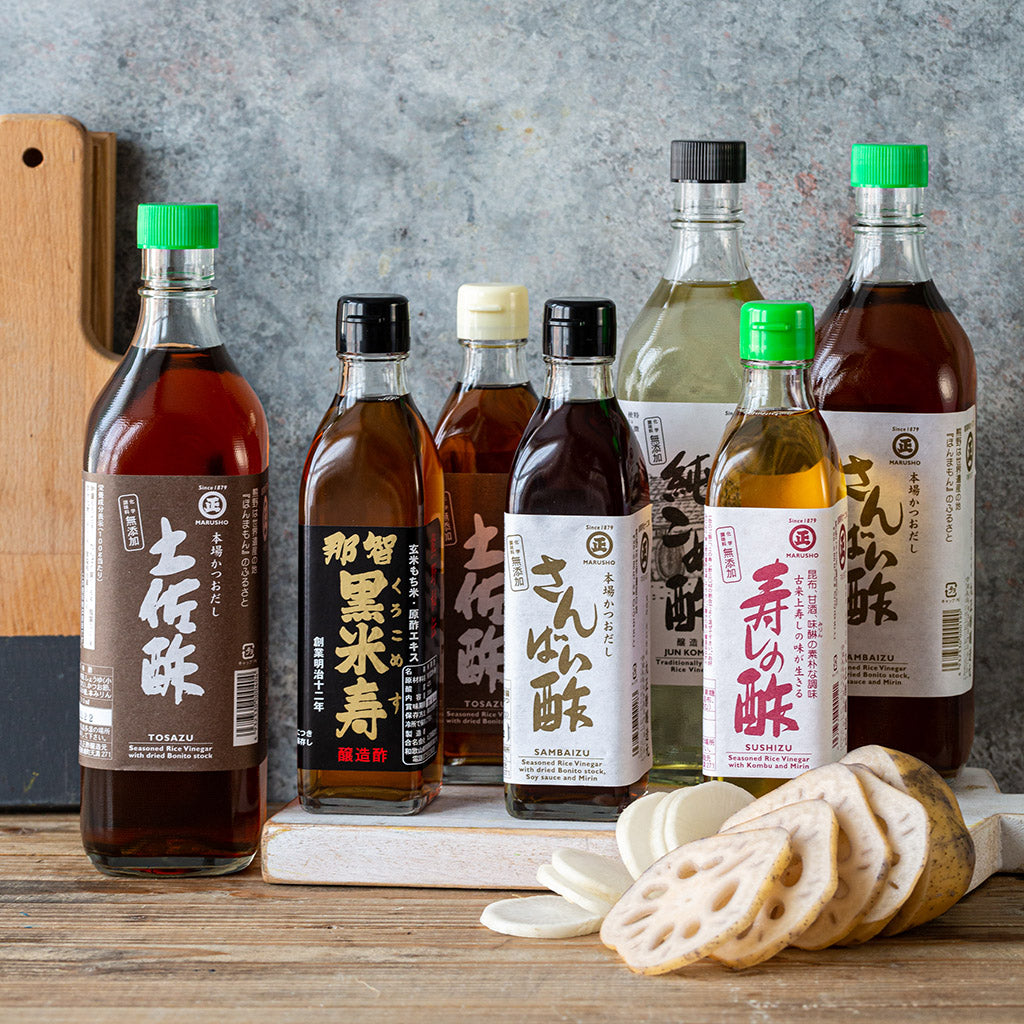
The range of fermented vinegars includes: Sake vinegar (Sakazu), Dashi vinegar (Tosazu), Bonito rice vinegar (Sambaizu), Sushi vinegar (Sushizu), Kombu seaweed black vinegar (Kombu kurozu), Black garlic vinegar (Ninniku korozu).
See the full range HERE
The Ledbury and the three Michelin star Gordon Ramsay at Royal Hospital Road are just two of the top restaurants we supply who are using these fermented and exquisitely flavoured vinegar's on their current menus.
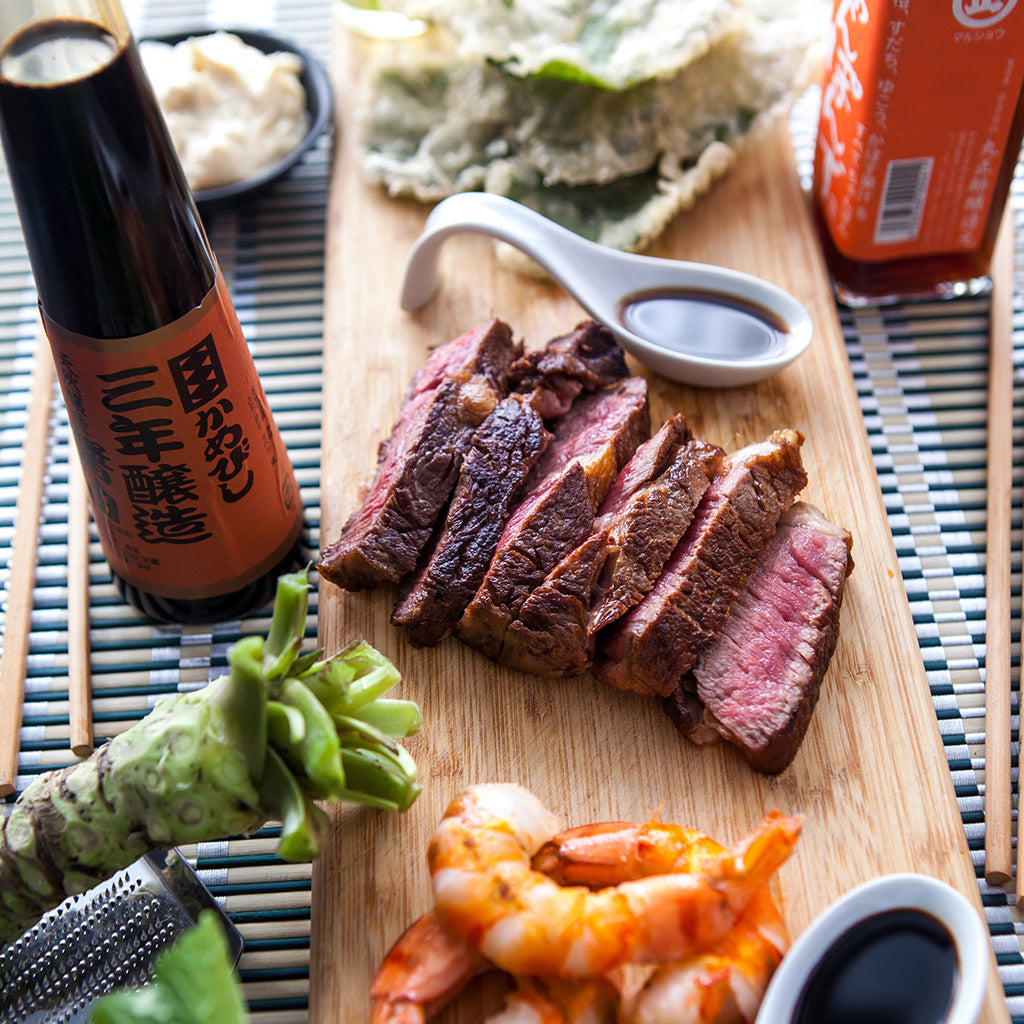
Classically paired with wasabi and eaten with sushi & sashimi but also used anywhere you are seasoning with salt and seeking to deliver an umami flavoured depth: grilled meat, tempura, vegetable stews, vinaigrettes and noodles.
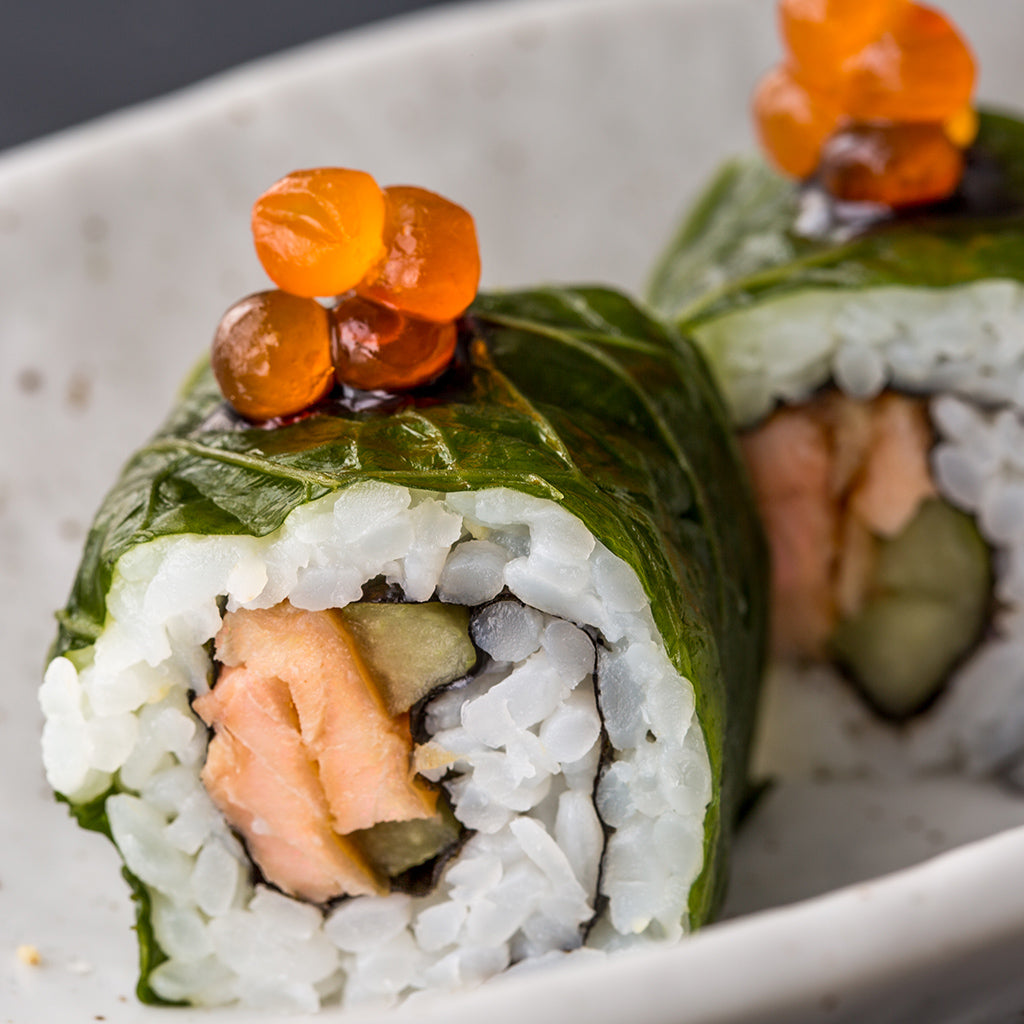
Sushi is vinegared rice so all you need is sushi rice and sushi vinegar, you can then top it or roll it with any ingredients you choose. Maki rolls are made by placing cooked and vinegared sushi rice on nori and then laying other ingredients on top. The nori and rice are then rolled to enclose the other ingredients and sliced into rounds. We have a special area on our website for sushi ingredients
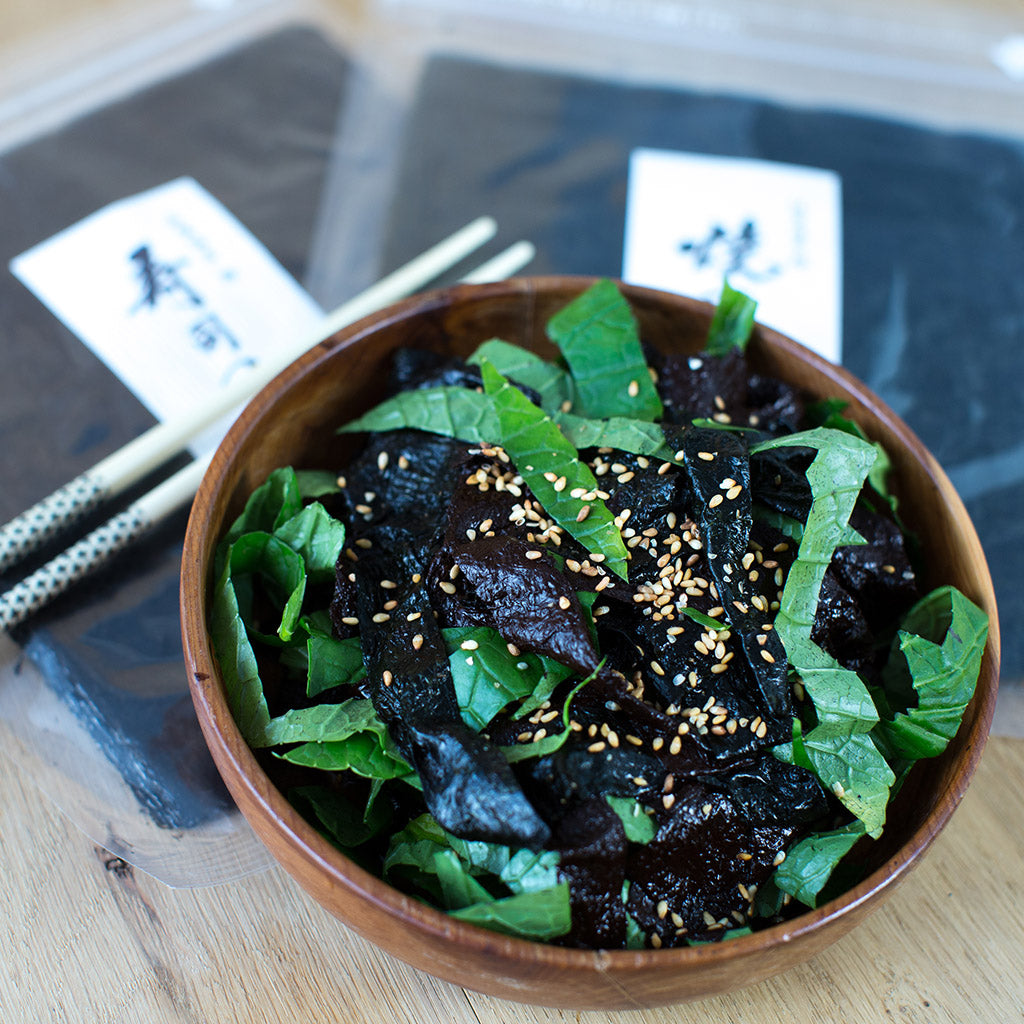
Nori is dried seaweed flattened into sheets to be rolled with sushi rice into maki rolls. Nori can also enjoyed on its own or shredded into soups.
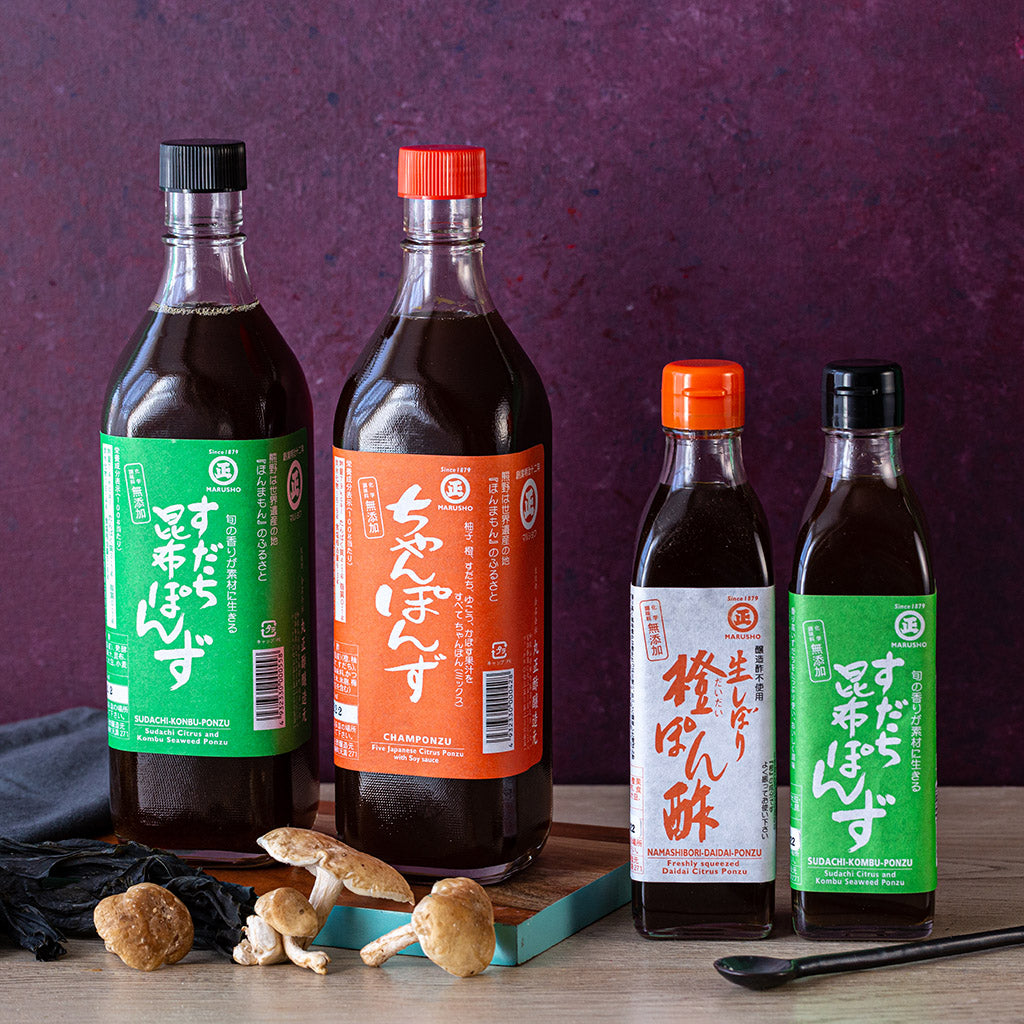
Ponzu is a citrus-based sauce commonly used in Japanese cuisine. It delivers a distinctive umami flavour. Tart, thin and dark brown: ‘pon’ in Japanese means ‘punch’ and ‘su’ is vinegar so the name literally translates as ‘vinegar punch.’ Ponzu with soy sauce added, such as Champonzu and Sudachi Kombu Ponzu from traditional Japanese makers Marusho is known as ponzu shoyu.
Ponzu is made by simmering mirin, rice vinegar, katsuobushi flakes (tuna) and seaweed. The liquid is then cooled and strained and the juice of either yuzu, sudachi, daidai, kabuso or lemon is added.
Ponzu is used as a dressing for salad, grilled meat and fish, or a dip for one pot dishes, sushi and sashimi. It also works very well as a marinade for fish, steak and ribs.
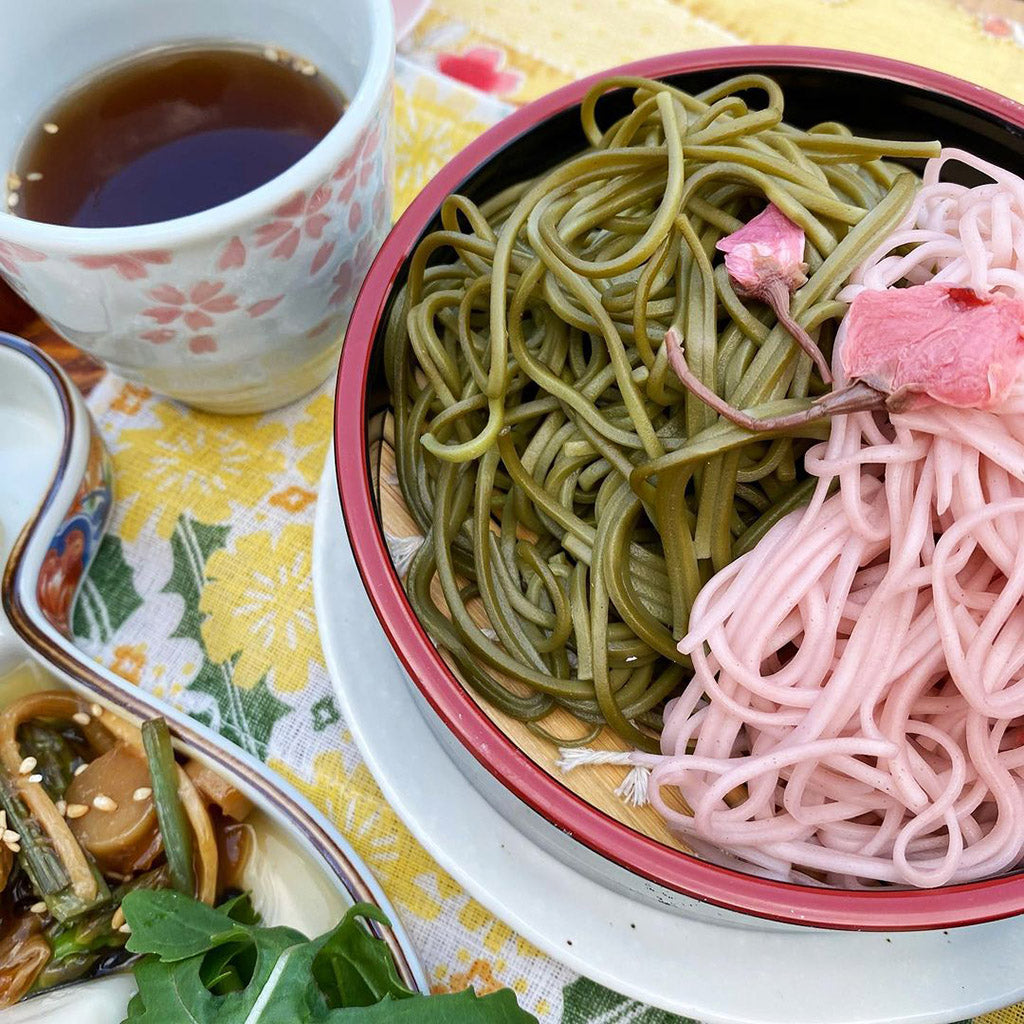
Soba Noodles are made from buckwheat, they are usually thin and are sometimes a combination of buckwheat and wheat flours.
[image courtesy of @tokyopony]
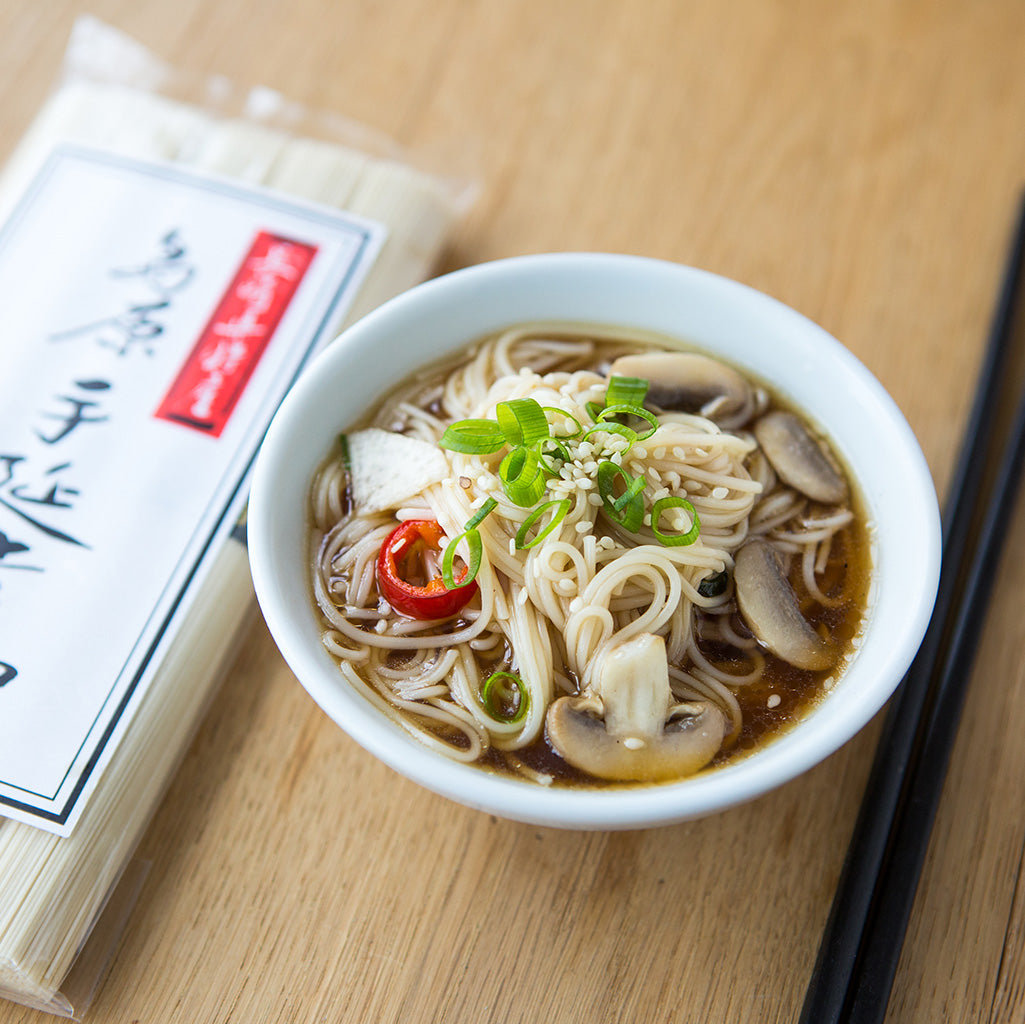
Somen noodles are very thin white Japanese noodles made of wheat flour, less than 1.3 mm in diameter. The noodles' diameter is the chief distinction between sōmen noodles and the thicker wheat or "udon" noodles.
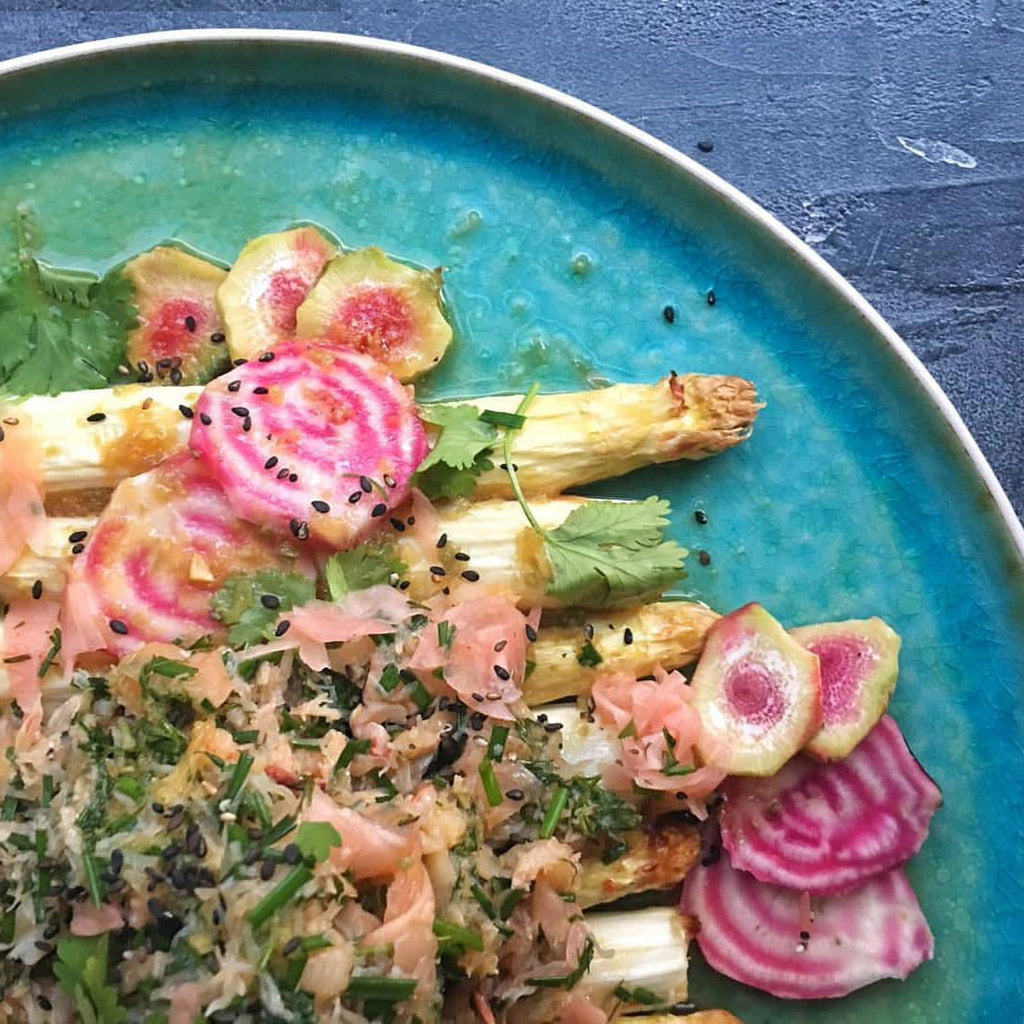
Sesame seeds can be use in salads and pasta dishes to give a rich, nutty flavour. They are also sprinkled over sashimi, sushi, salads, fish and desserts.
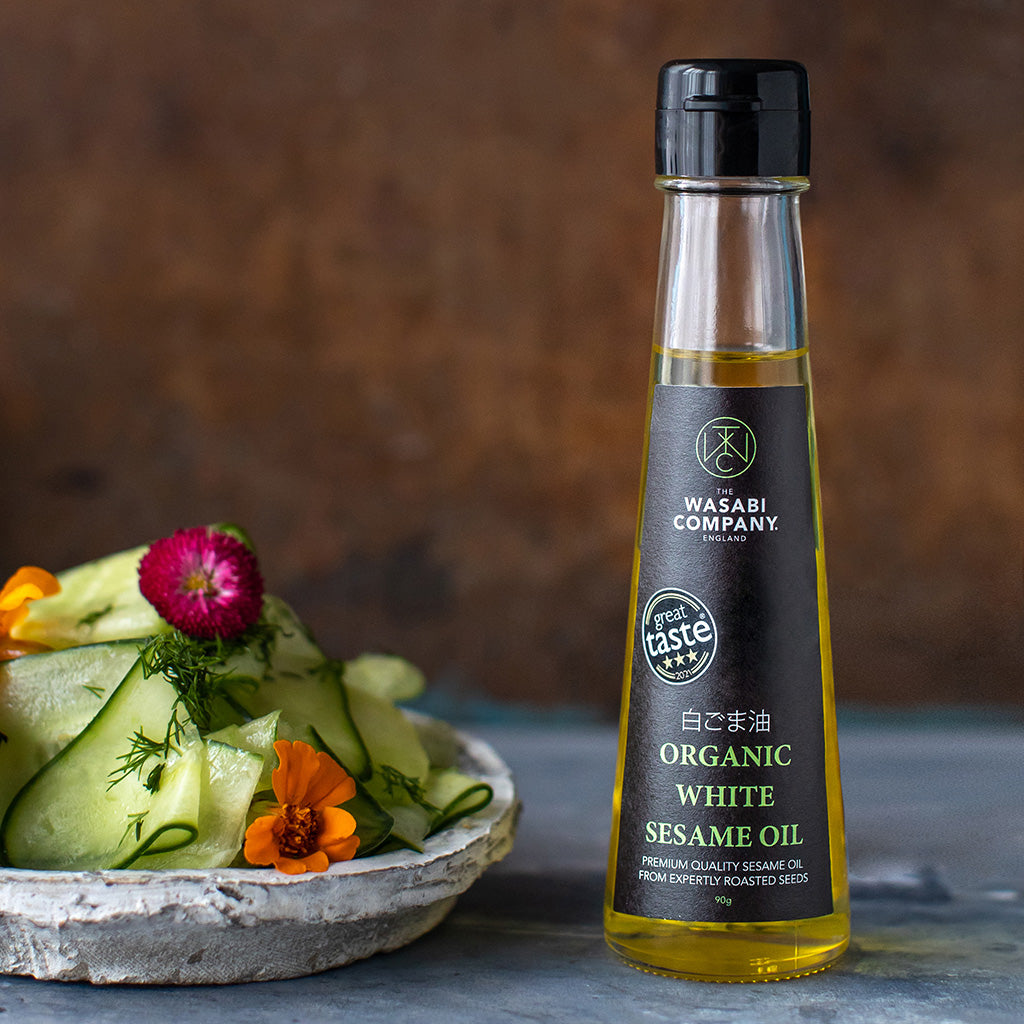
Sesame oil is used in dressings, vinaigrettes, meat marinades, fish, tofu, sushi & sashimi. Very small amounts are required as the flavour of the best quality oils are very strong. Just a light drizzle will be sufficient to flavour a serving of freshly steamed or fried vegetables. Add the sesame oil after cooking and just before serving.
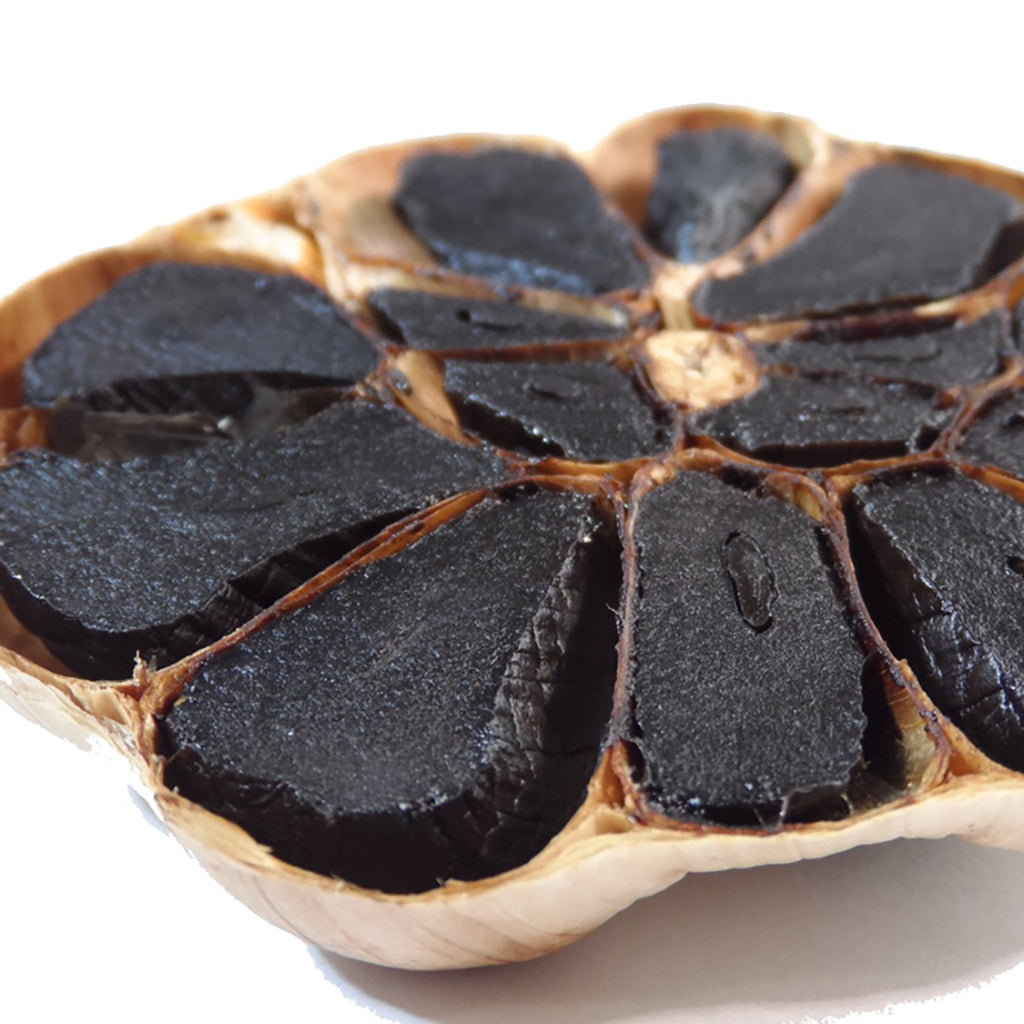
Black garlic is a type of "caramelized" garlic. It is made by heating whole bulbs of garlic over the course of several weeks, a process that results in black cloves. Bulbs are kept in a humidity-controlled environment at temperatures that range from 140 to 170 degrees Fahrenheit (60 - 77ºC) for 14 to 40 days.
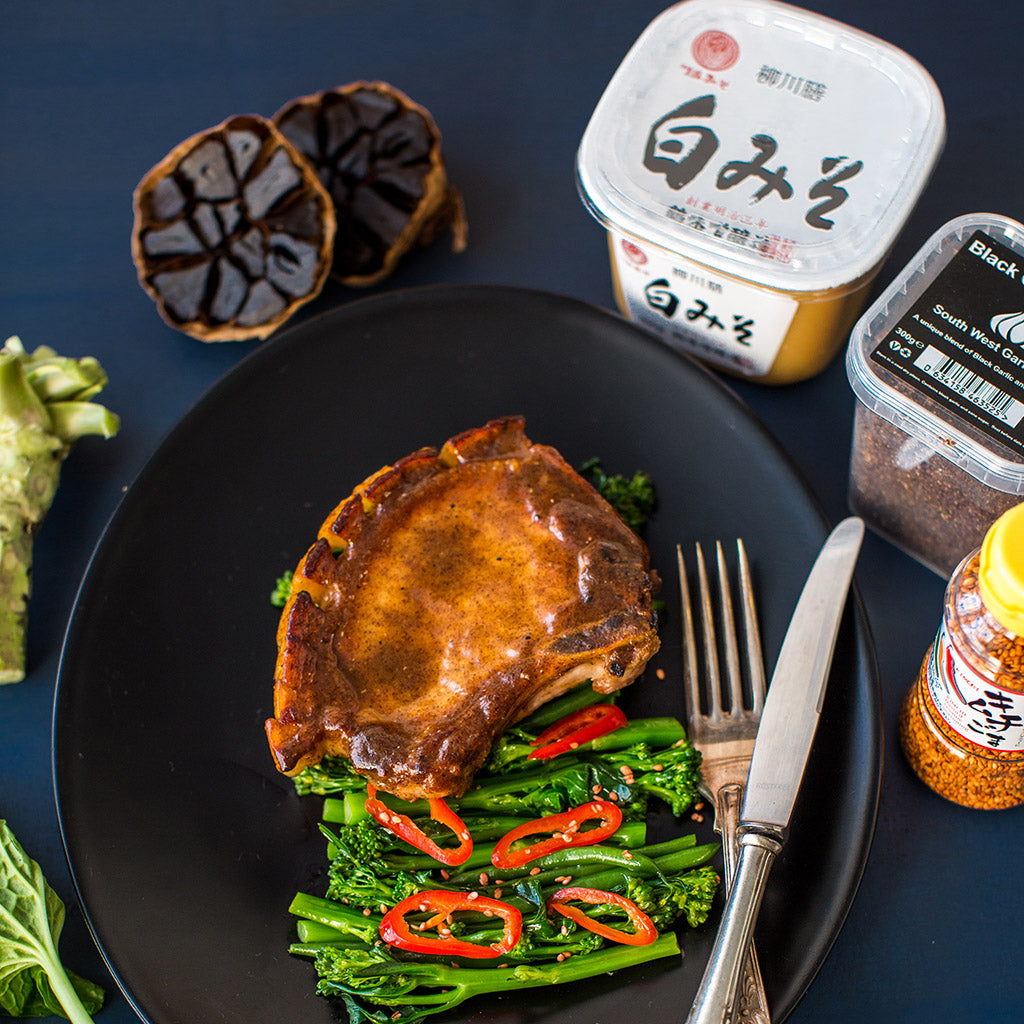
Black Garlic was first used as a food ingredient in Asian cuisine, but has since caught the attention of chefs across the globe, and is used in a wide variety of dishes from Risotto to poached eggs! As well as the bulbs of the Black Garlic, also available are Black Garlic Sea Salt and Black Garlic Sugar.
The taste is sweet and syrupy with hints of balsamic vinegar, liquorice and tamarind.
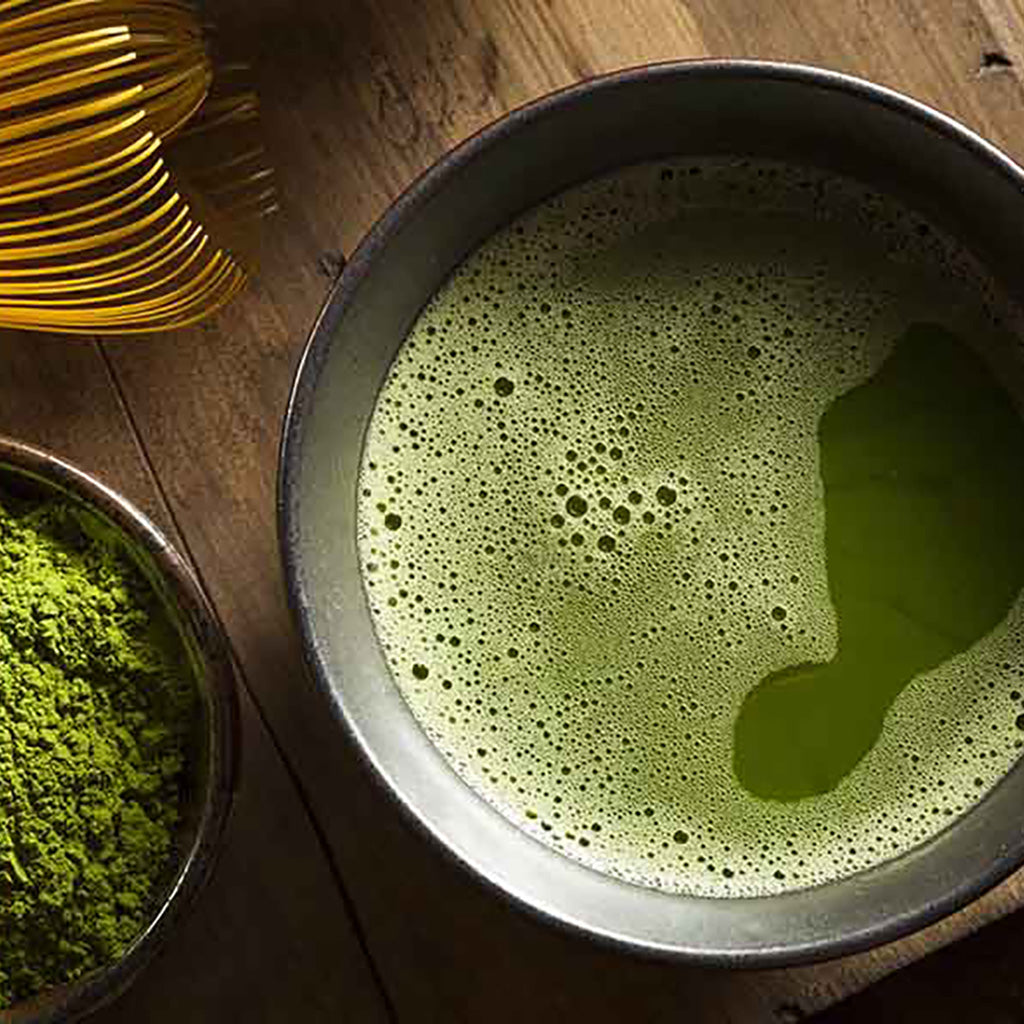
Japanese teas include Genmaicha, a flavourful blend of sencha and toasted brown rice traditionally drunk by the workers on the tea plantations; Gyokuro and Houjicha are other green teas and of course the famous matcha tea. Green teas are so named as the natural oxidisation process is halted by heating the leaves at harvest so the leaves stay green and when brewed correctly are free of bitterness.
All green teas contain Catechin (or Tannin) this is a bioflavonoid that has both anti-viral and antioxidant effects. Catechin and the vitamin C found in green tea can contribute to lower cholesterol by clearing veins and arteries and has been shown to be an effective prevention against influenza.
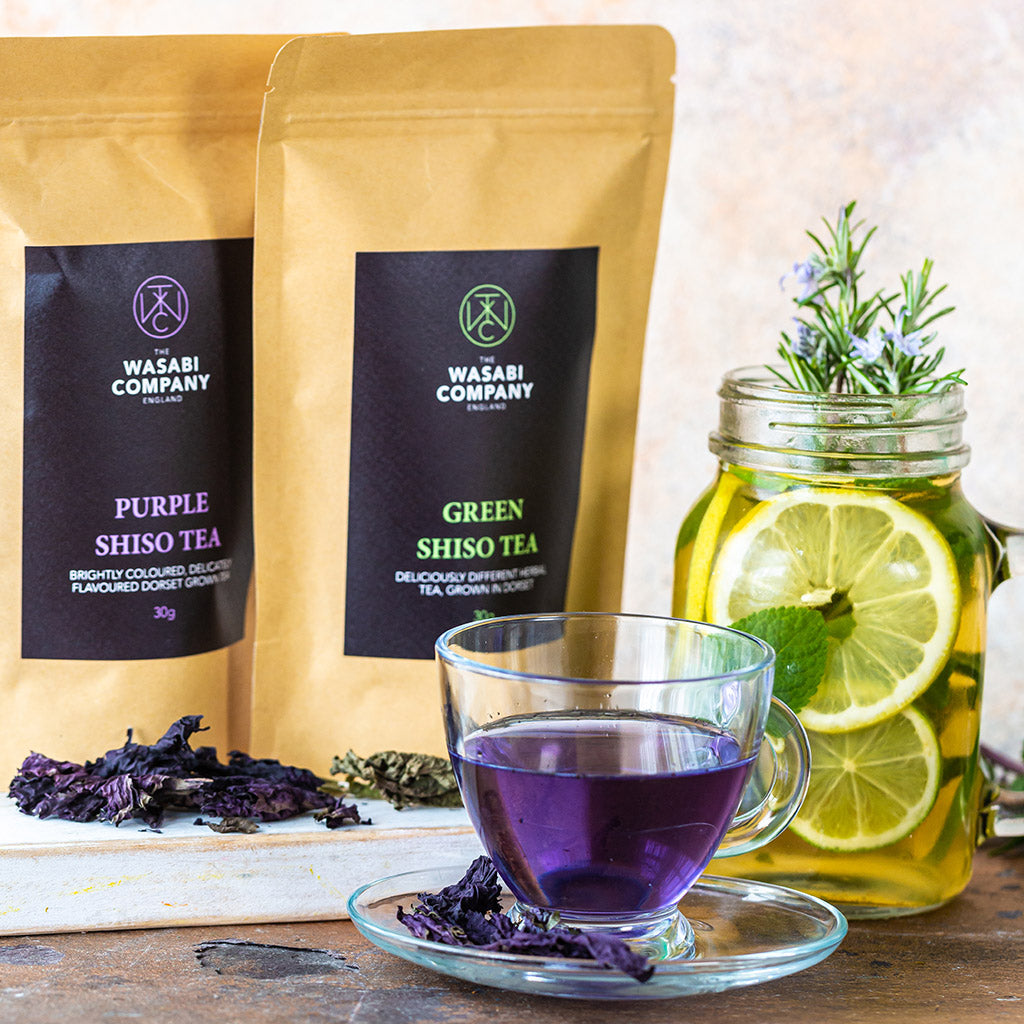
Here you can place an explanation or answer to the question.Shiso tea is made from the dried or fresh leaf of the shiso plant. Shiso leaves can be green, red / purple or a combination of these colours. Red shiso will produce blue and once brewed for longer, purple tea.

